YCC abandons self-compensation proposal























 BY JANALIE COBB STAFF REPORTER
BY JANALIE COBB STAFF REPORTER
Pres. and vice pres. face student backlash to proposal
Students voiced opposition to a budget proposal raised by Yale College Council President Leleda Beraki ’24 and Vice President Iris Li ’24 that would pay the two leaders $4000 each from YCC funds.
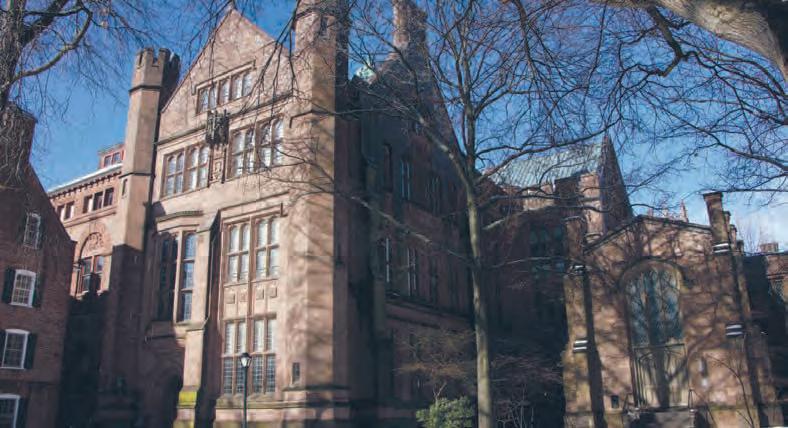

Beraki and Li first brought the proposal to the YCC on March 5, but delayed voting on it until the following YCC meeting on April 2. In the week prior to the meeting, an image of minutes from the March 5 meeting detailing the proposal was posted to the campus chat app Fizz, generating widespread criticism from anonymous student posters. The proposal was ultimately not on the agenda for the April 2 meeting, and was not discussed or voted on.
In a joint statement to the News, Beraki and Li wrote that the primary purpose of the proposal was to remove barriers to

access that the positions of President and Vice President presented.
“In order to keep up with the demands of YCC and our academics, we both had to either quit jobs or relinquish numerous hours of work,” the statement read. “While both of us are able to take a reduction to student job hours without the loss of those wages significantly impacting our Yale experience, we recognize that not all students here would be able to run for Yale College Council o ce given that financial restriction.”
Funding for this proposal would have come from the YCC endowment, which




Uni. orders student groups out of 305 Crown St.
BY SARAH COOK AND MIRANDA WOLLEN STAFF REPORTERS
Emami named new School of Nursing Dean
BY WILLIAM PORAYOUW STAFF REPORTER




Azita Emami is set to take over as the dean of the School of Nursing, University President Peter Salovey confirmed in a Monday email sent to Yale faculty, staff, students and trustees.
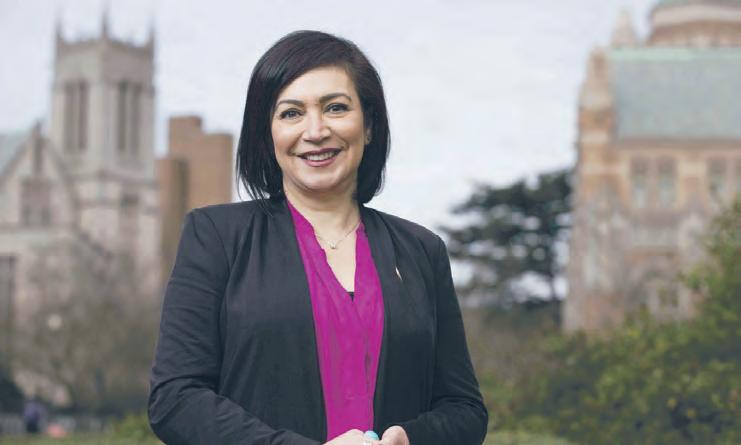
Emami — who currently serves as executive dean of the School of Nursing at the University of Washington — will begin her appointment on Aug. 1. As the Yale School of Nursing responds to recent criticism from students claiming professors neglected the role of race in health education, Emami says she will prioritize promoting diversity, equity and inclusion in the school’s culture and in its academic curriculum.
“Nursing is a profession where our responsibility is to care about and for people no matter where they come from,

Professor Dragomir Radev dies at 54
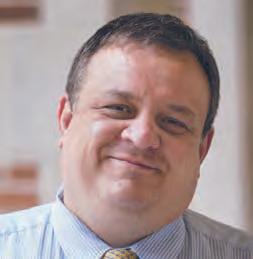 BY MIRANDA WOLLEN STAFF REPORTER
BY MIRANDA WOLLEN STAFF REPORTER
A prolific force in his field, Dragomir Radev, the A. Bartlett Giamatti Professor of Computer Science at Yale, wrote two books and numerous papers on computational linguistics and natural language processing. He died last Wednesday at the age of 54.
Radev led the U.S. team to victory in multiple International Linguistics Olympiads, taught an open course in NLP to over 10,000 students and loved foreign language movies. Radev was also a family man, devoted to his wife Axinia and their two daughters, Laura and Victoria.
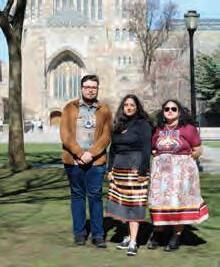
“I knew Drago as a leader in his community,” Jeffrey Brock, dean of the School of Engineering and Applied Sci-
ences, told the News. “He had a love for people and colleagues, and he was much loved in return.” Brock noted that Radev’s interests were varied, ranging from automated book summarization to attempts to program humor into natural language processing systems. In addition to background information on his academic work and course offerings, his website includes a list titled “My favorite movies,” organized by director, country of release, awards, release year and the year Radev first watched them.
Indeed, Sterling Professor of Political Science Alan Gerber ’86 agreed that Radev refused to confine himself to a single area of interest or academic field.
SEE RADEV PAGE 5

On Thursday, Assistant Dean of Student A airs Hannah Peck sent an email to student groups housed at 305 Crown Street — including The Yale Herald, The Yale Record and the Yale Political Union — informing them that they have until the end of the year to vacate their on-campus spaces. The building, which hosts 15 student organizations, will be converted into shared storage for multiple campus organizations.
In her email to students, Peck wrote that over 500 registered undergraduate organizations rely on Yale’s resources, and that the decision is an effort to optimize them.
“Some groups that used to require physical space for their work moved online during covid and are now often



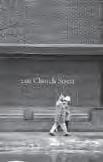
YHHAP Fast returns for spring fundraiser
 BY DALIYA EL ABANI STAFF REPORTER
BY DALIYA EL ABANI STAFF REPORTER
In the fall, 1,277 Yale students donated their meal swipes in support of local organizations that seek to alleviate hunger and homelessness in the New Haven area, translating to a total monetary value of $10,087.38. This spring, the Yale Hunger and Homelessness Action Project hopes to do it again.
On April 15, Yale College students can once again choose to donate their meal swipes to be converted into tangible funds given to YHHAP through Yale Hospitality. Between April 5 and 14, students can log in to their SIS account, select the “Dining” tab, and opt-in to
INSIDE THE NEWS C ROSS C AMPUS JANET YELLEN VISITS YALE PAGE 6 NEWS THIS DAY IN YALE HISTORY, 1972. A report is issued by the Dahl committee recommending multiple structural changes to the University, including increasing admission of women and recruitment of more student scientists. CLIMATE Youth climate activists led a “fossil fools” protest in Downtown New Haven. PAGE 7 NEWS BIODIVERSITY Yale researchers evaluated the impact of the Paris Agreement on wildlife preservations. PAGE 7 SCITECH PAGE 3 OPINION PAGE 6 NEWS PAGE 13 BULLETIN PAGE 14 SPORTS PAGE B1 SPISSUE
NEW HAVEN, CONNECTICUT FRIDAY, APRIL 7, 2023 VOL. CXLV, NO. 23 ·yaledailynews.com ·@yaledailynews THE OLDEST COLLEGE DAILY FOUNDED 1878 SEE FAST PAGE 5 SEE DEAN PAGE 5 SEE YCC PAGE 4
SEE CROWN ST. PAGE 4 Emami, listed diversity, equity and inclusion as her top priorities for her new role. / Courtesy of Yale President
The proposal, raised by Yale College Council President Leleda Beraki ’24 and Vice President Iris Li ’24, would have compensated both of the two leaders $4000 a year./ Tim Tai, Photography Editor
Three Indigenous student leaders share their stories, B1
Dragomir Radev was described as tireless and compassionate. / Courtesy of YSEAS

ws.com
Yale, don’t take away our o ces
The Yale administration loves to boast about how its vibrant extracurricular life fosters a strong sense of community on campus. Now, the university is exiling many of its biggest clubs from their longtime homes.
On Thursday, Mar. 30, our organizations — the Herald, the Record, the Yale Political Union, and others — received an email from Assistant Dean of Student Affairs Hannah Peck informing us that we have until the end of the year to vacate our on-campus office spaces.
The scandal of Easter
Yale for our members and the campus at large. In her email, Peck wrote, “Shifting the on-campus spaces to shared storage space will benefit many groups and remove the inequities that were often attached to the assigning of offices or meeting rooms to specific, often older, student organizations.” So who are these landed elites that the administration plans to eject from their ill-begotten homes in a quest to rectify inequities? In short, some of the most accessible extracurricular activities on campus, and ones primarily focused on creative self-development. Our organizations are committed to accessibility; two of them are explicitly devoted to advancing freedom of expression and facilitating the exchange of ideas. Anyone can walk in and join. In the context of an increasingly bureaucratic and professionalized student culture of rushing, pledging, heeling and tapping, our open doors mean something. We’ve grown up in these spaces — as members of clubs, but also as people. On a campus where so many things seem to be exclusive, elitist, competitive, and rigorous, these groups welcomed us and offered us spaces we could call home. Meanwhile, any group wealthy and established enough to own their own space — frats, the Yale Daily News, societies — will be una ected. Per Dean Peck’s email, this is a matter of ensuring every group has equitable storage space. So the administration has o ered each club a single shelf for storage. That is not enough to meet our needs — nor any other club’s. The administration is prioritizing a simplistic conception of fairness above practical concerns about what sort of space and resources each club actually requires.
Being raised in a nominally Jewish household in the Midwest, I always considered Christians as “normal” and us Jews as the special ones. In fact, with a Jewish mother and Christian father, I considered myself “half Jewish, half plain,” as if being Christian was the boring default of the rest of the world. It wasn’t until college, through friends and randomly encountering Kierkegaard and Dostoevsky, that I came to consider Christianity as, if it is anything at all, not normal. There is an o ense inherent to this religion that goes back to the earliest Christians, who referred to Jesus as a “stumbling block” and “rock of o ense.” The apostle Paul’s own description of the gospel, or good news about Jesus, is “foolishness to the Greeks.”
These descriptions of offense may not be at all surprising to us at Yale, since our social and cultural values are often on the opposite side of the culture wars from the loudest and most popular American Christians. Part of my frustration with the social conversation around religion is not that people get o ended, but that we take offense at the wrong thing. Christians, myself included, often act judgmental and self-righteous. That’s not just a character flaw, it’s a self-defeating posture. Having the privilege of being a Christian pastor now for over a decade, I have come to deeply appreciate that the o ense that Jesus provides is not primarily a social one to “those people” outside the church, in light of whatever is perceived to be the Christian stance on sexuality, marriage or legal rights; Rather, it applies equally to all people and is precisely
what this weekend of Good Friday and Easter is meant to celebrate.
The o ense is that God in human form came, as the Gospel of John describes, “to his own and his own people did not receive him.” His own people — that is, the best of the world and his chosen covenant people — rejected him. We are all meant to see ourselves in those who condemned Jesus, so that we see that when Love itself walked among us, we rejected it! We killed the author of life! The very embodiment of truth and goodness and beauty was treated as a treasonous impostor and enemy of the state.
cross in Jesus’ place. This scandal-turned-salvation then, and only then, can become the life-transforming, world-revolutionizing movement that it became in the decades after Christ.
The heart of Christianity proclaims, yes, there is a judgment, and it is upon the best among us. Christians may be known for being angry, the irony is that we should be known for being angrier at our own sin more than anyone else’s. Combining realism — the obvious fact of sin — with the idealism of God’s redemptive grace could make us more merciful than the most optimistic anarchist, all because of the cross of Christ. Put another way, we may accomplish the pinnacle of human achievement and joy, which is surely on o er at a place like Yale, and still fall woefully short of the glory of God and the purpose of humanity.
If we realize that our only hope and comfort is not that I must climb my way up to God, but rather that God climbed down to me, only to face utter humiliation and disgrace — and in that moment to still love me — then we can experience true freedom and joy and peace.
This weekend, we are all invited to look past the distractions, and consider the one who “trampled down death by death.” The o ensive response is to think we can do that trampling ourselves.
Our groups, with no help from the administration, have made these rooms our homes. Sure, there might not be functioning air conditioning in some of the rooms in 305 Crown St. And yes, to the administrative eye, maybe our stacks of old issues, crumpled-up food wrappers and posters from events decades in the past seem like trash. To us, they are part of our identity and history.
Yale has shown no interest in supporting our clubs’ efforts to clean up, refurnish, or revitalize these spaces — we’ve undertaken these efforts on our own. Now that’s all being taken away. The administration seems to think that our clubs can continue to function no matter where we are. But if this removal goes through, it will tear at the seams of our communities.
Our groups aren’t just machines churning out content and hosting events; they have brought us together with our closest friends and enriched life and learning at
Our organizations provide important avenues for undergraduate learning, community, and creativity. In our o ces, countless skills, friendships, and careers have been forged. In this decision, Yale administration is choosing bureaucratic optimization over community-oriented extracurricular life. Instead of gutting student o ces, they should invest in them. If Yale lived up to its values, it would reverse this decision.
Signed,
The Yale Herald, Editors-inChief Josie Steuer Ingall ’24 and Leo Egger ’24
Yale Political Union, President Jean Wang ’24, Speaker Anna Martinelli-Parker ’24
The Yale Record, Editor-inChief Clio Rose ’24
The Yale Student Environmental Coalition, Co-Presidents Sebastian Duque ’24 and Madeleine Zaritsky ’25
The Editorial Board is calling on Yale Hospitality to expand its dining options in regards to the food provided and where meal swipes can be used. One vital component of Yale Hospitality is its ability to provide adequate meal options to people with religious and allergy based dietary constraints. Although Yale Hospitality is constantly working to meet the needs of these students, the Editorial Board believes that current attempts to do this fall short. One example of this is in regards to kosher meals.
I believe we are called to see ourselves in that condemnation — on both sides. We are the ones putting Jesus on the cross, and we are the ones deserving to be on the
CRAIG LUEKENS DIV ’08 is the Interim Lead Pastor & University Pastor at Christ Presbyterian Church, and has previously served as coordinator of Athletes in Action at Yale and as the chaplain of the Yale Football team. He can be reached at craig.luekens@yale.edu.
Slifka, the kosher dining hall at Yale, is a great option for Yalies who keep kosher. However, this is the only option on a Yale meal plan with truly kosher items. Many religious students don’t feel comfortable using other dining options because of the lack of clear delineation between kosher and non kosher food. Oftentimes, kosher options are sandwiched between obviously not kosher meats or food combinations: think kosher chicken next to a pork roast or meat and cheese dish. Students have additionally experienced difficulty bringing kosher food into residential dining halls due to confusion regarding Yale Hospitality’s policy banning food purchased outside of the dining hall, creating an extremely isolating experience for religious students. Regardless of what we like to eat, connection with those around us — whether or not they share our religious beliefs — is what makes a Yale experience all the more special.
This experience of finding dining halls lacking in accessible food
options is also common for those who adhere to a halal diet and even for those who are vegetarian, vegan or have restrictions due to allergies.
Food that aligns with a student’s religious or personal needs should be a basic right on Yale’s campus. Students’ needs should be respected by Yale Hospitality administrators and sta .
This is why it is so important to allow for student feedback on dining options. Hearing suggestions directly from the students who are impacted by these dining restrictions is the only way that Yale Hospitality will be able to ensure the food it puts out is accessible for everyone on campus.
This is why the Editorial Board encourages Yale Hospitality to diversify its feedback opportunities by placing suggestion boxes in dining halls and sending out periodic surveys asking students about their favorite and least favorite meal options. Data from these surveys can help to cater to student requests and prevent food waste. Some dining halls leave manager business cards at the desk, but students may be wary of providing negative feedback to sta since they do not want their feedback to be misinterpreted as disrespect for the hard work and long hours that Yale Hospitality sta put in. For these reasons, an enhanced, anonymized, regular feedback system would improve student satisfaction and make meal preparation more cost-e ective, e cient and environmentally sustainable.
On top of being more receptive to student feedback on meal options, allowing students to use their meal swipes at more locations will provide students with access to a larger variety of food options. Yale Hospitality boasts more than 15 di erent retail venues outside of the 14 residential college dining halls for students, faculty, and sta to patronize. Locations such as the Elm, Ramen at Becton and Ivy pride themselves on their acces-
sibility through flexible hours and vast selections, yet their policies of only accepting credit cards or dining points constrain the many undergraduate students who rely on the full meal plan option. In order to make these options more accessible to the whole student body and give students a wider array of choices in the food they eat, the Editorial Board is calling on Yale to allow these locations to accept meal swipes.
The Editorial Board also proposes that students on the full plan should have 21 swipes per week to use at their own discretion, rather than a single meal swipe per time slot. This greater flexibility in how students are able to utilize their meal swipes will allow for the full meal plan to work with more students’ schedules.
Furthermore, Yale currently requires all undergraduates residing on campus to have either the Full or Flex meal plan. The Full Plan includes 21 meals a week and 5 guest swipes per semester, while the Flex Plan includes 14 meals a week, as well as 10 guest swipes and 300 dining points per semester. Despite their obvious di erences, both cost $3,975 this academic year. The Editorial Board believes a meal plan with less purchasing power should in turn cost less, reflecting the price of what it provides.
In recommending these changes the Editorial Board recognises that dining at Yale is more inclusive than at many other schools, even if students would consider Forbes’s claim that “Yale Students Enjoy the Best Food of Their Young Lives” as a bit extreme. What we hope to o er in this article is not to discount what we have, but instead to encourage the University to continue working towards more inclusive options. Having access to food that meets a person’s needs and preferences is an essential component of making Yale a home for all students.
Contact EDITORIAL BOARD at editorialboard@yaledailynews.com.


OPINION NEW HAVEN, CONNECTICUT COPYRIGHT 2023 — VOL. CXLIV, NO. 18
ANYONE CAN WALK IN AND JOIN. IN THE CONTEXT OF AN INCREASINGLY BUREAUCRATIC AND PROFESSIONALIZED STUDENT CULTURE OF RUSHING, PLEDGING, HEELING AND TAPPING, OUR OPEN DOORS MEAN SOMETHING. WE’VE GROWN UP IN THESE SPACES — AS MEMBERS OF CLUBS, BUT ALSO AS PEOPLE
STUDENTS’ NEEDS SHOULD BE RESPECTED BY YALE HOSPITALITY
GUEST COLUMNIST CRAIG LEUKENS
Yale Dining for everyone
YALE DAILY NEWS FRIDAY, APRIL 7, 2023 ·yaledailynews.com PAGE 3 EDITORIALS & ADS The Editorial Board represents the opinion of 12-15 members of the Yale community. Other content on this page with bylines represents the opinions of those authors and not necessarily those of the Managing Board. Opinions set forth in ads do not necessarily reflect the views of the Managing Board. We reserve the right to refuse any ad for any reason and to delete or change any copy we consider objectionable, false or in poor taste. We do not verify the contents of any ad. The Yale Daily News Publishing Co., Inc. and its o cers, employees and agents disclaim any responsibility for all liabilities, injuries or damages arising from any ad. The Yale Daily News Publishing Co. ISSN 0890-2240 SUBMISSIONS All letters submitted for publication must include the author’s name, phone number and description of Yale University a liation. Please limit letters to 250 words and guest columns to 750. The Yale Daily News reserves the right to edit letters and columns before publication. E-mail is the preferred method of submission. ADVERTISEMENT (203) 432-2424 (before 5 p.m.) (203) 432-2400 (after 5 p.m.) Direct all letters, columns, artwork and inquiries to: Contact the Opinion Editors at opinion@yaledailynews.com Direct all comments regarding the fairness or accuracy of stories to: Lucy Hodgman Editor-in-Chief (203) 432-2418 Christian Robles Public Editors public@yaledailynews.com ISSUES PRINTED BY Valley Publishing Co, Derby, CT. ONLINE ARCHIVES OurSchoolNewspaper.com/Yale YALE DAILY NEWS PUBLISHING CO., INC. 202 York Street, New Haven, CT 06511 (203) 432-2400 Editorial: (203) 432-2418 editor@yaledailynews.com Business: (203) 432-2424 business@yaledailynews.com EDITOR IN CHIEF & PRESIDENT Lucy Hodgman MANAGING EDITORS Dante Motley Sylvan Lebrun PUBLISHER Olivia Zhang PUBLIC EDITOR Christian Robles INTERNAL AFFAIRS Nicole Rodriguez EXTERNAL AFFAIRS Anjali Mangla OPINION EDITORS Shi Wen Yeo UNIVERSITY EDITORS Miranda Jeyaretnam Jordan Fitzgerald CITY EDITORS Sai Rayala Sophie Sonnenfeld ARTS EDITOR Illana Zaks SCIENCE & TECHNOLOGY EDITORS Sophie Wang Elizabeth Watson SPORTS EDITORS Andrew Cramer Hamera Shabbir WEEKEND EDITORS Eda Aker Jacqueline Kaskel Alex Ori Ava Saylor FEATURES EDITOR Alex Ori MAGAZINE EDITOR Abigail Sylvor Greenberg CHIEF FINANCIAL OFFICER Stevan Kamatovic YTV Piper Jackman Max Sternlicht Maya Weldon-Lagrimas COPY EDITORS Josie Jahng Maya Melnik Hailey O’Connor Paola Santos Patrick SebaRaj PRODUCTION AND DESIGN EDITORS Beril Birlik Chris de Santis Evan Gorelick Yash Roy Jessica Sánchez Anika Seth Sophie Sonnenfeld PHOTOGRAPHY EDITORS Gavin Guerrette Yasmine Halmane Tenzin Jorden Tim Tai Giri Viswanathan PODCAST EDITORS Alyssa Michel Christion Zappley ILLUSTRATIONS EDITORS Ariane de Gennaro Jessai Flores DATA EDITOR Tre Flagg DIRECTOR OF TECHNOLOGY Tiger Wang AUDIENCE EDITORS Toia Conde Rodrigues da Cunha Charlotte Hughes Nathaniel Rosenberg Rachel Shin
Y ALE DAILY NEWS EDITORIAL BOARD Make
WE MAY ACCOMPLISH THE PINNACLE OF HUMAN ACHIEVEMENT AND JOY, WHICH IS SURELY ON OFFER AT A PLACE LIKE YALE, AND STILL FALL WOEFULLY SHORT OF THE GLORY OF GOD AND THE PURPOSE OF HUMANITY.
FROM THE FRONT
University orders student groups out of 305 Crown Street space
able to function digitally,” Peck wrote. “Shifting the on-campus spaces to shared storage space will benefit many groups and remove the inequities that were often attached to the assigning of offices or meeting rooms to specific, often older, student organizations.”
Peck added in the email that all registered student organizations will have access to meeting spaces through the Registrar’s Office, the residential c olleges, the campus centers and the Schwarzman Center, and each group will be given one shelf in the 305 Crown storage room and swipe access to the space. She encouraged groups to consult with University Archives for items of historical value to the groups.
In response to a request for comment, Peck forwarded sections of her emails to the News, adding that “maintaining 15 rooms on campus for only a few of our 500 student organizations became an issue of equity” and that the change will “benefit” more groups.
In response to the email from Peck, student groups voiced concerns about the decision, claiming that they were not given e nough input or warning about the decision.
Arnav Tawakley ’24, who is involved with the humor magazine The Yale Record, told the News that the group primarily uses the space for working on the magazine, socializing and storage for print Issues and merchan-
dise. He said the space is used for the Thursday “Happy Fun Time” event that provides an opportunity for socializing as a club while working on the magazine and is open to anyone on their email list of about 1,300 students.
“Two Record freshmen from the class of '14…were both assigned to 'clean the office' when
their seniors noted a mutual crush,” Tawakley told the News. “The two are now married, and active Record alumni.”
Tawakley raised concerns about the group’s ability to vacate the space entirely by the May 21 deadline. He noted that this date fell soon after the busy schedule of finals and reading period, when
club members may not have time to sort through the archives, coordinate with the Yale archives and alumni and clean the space.
“The Record would have been amenable to a discussion about ways it could democratize the use of its space, but was not given any warning, let alone room for dialogue,” Tawakley told the News.
The Yale Herald co-editors-in-chief Leo Egger ’24 and Josie Steuer Ingall ’24 wrote in a joint statement to the News that losing their space would be “devastating.”
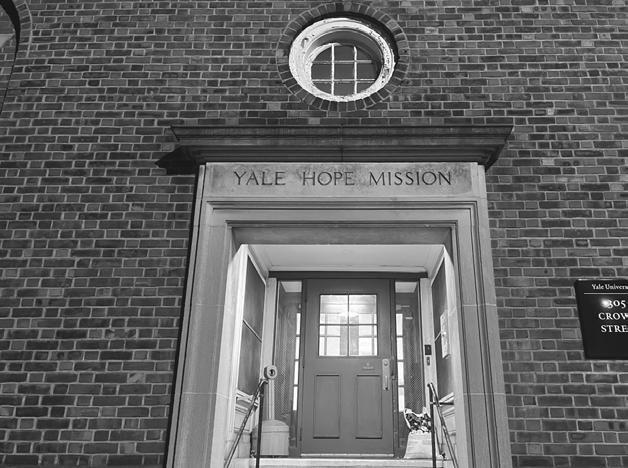
Steuer Ingall and Egger emphasized the imbalance that would be created were the News, which is housed at 202 York Street, to become the only campus publication with a physical office space. Unlike the publications located at 305 Crown S treet, the News is financially independent of the University.
“This decision to turn our offices into storage space helps no one. It threatens to destroy established bastions of creativity and learning on this campus,” Steuer Ingall and Egger wrote to the News. “Students need to reckon with a campus bureaucracy that is eliminating spaces of care and community in the name of relentless optimization, under the guise of equity.”
In a letter from the editors posted to the Herald’s website yesterday, Egger and Ingall asked students for their support in reversing the decision. The letter argued further that the equity argument was utilitarian at the expense of community and history. It pointed also to the inadequacy of the one-shelf storage areas which organizations would be granted.
As of 10 P.M. Monday night, a petition to “Save the Yale Herald” had garnered nearly 500 signatures. Contact SARAH COOK at sarah.cook@yale.edu and MIRANDA WOLLEN at miranda.wollen@yale.edu.

YCC $4000 self-compensation proposal abandoned following student backlash
YCC FROM PAGE 1
constitutes a portion of YCC’s funding. The remainder of YCC funding comes from the $125 student activity fee that is factored into each student’s tuition and fees. Beraki and Li told the News that they did not intend for any money from the student activity fee to be used for this proposal.
According to Speaker of the Senate Ryan Smith ’24, the conversation was pushed from the March 5 to the April 2 meeting because multiple senators t ook issue with the proposal and did not feel prepared to vote on it. Had the proposal been approved, it would have gone into immediate effect.
“Some thought it was wrong to pay ourselves this year, some thought it was unfair to pay only some members of the YCC and not others, and some thought both,” Smith told the News.
The minutes for the March 5 meeting, including notes on the compensation proposal, were sent out in an email to the student body on March 8. When the minutes were anonymously posted to Fizz on March 31, they were met with a wave of opposition from other student posters on the app.
“Like most of the student body, I learned of the proposal from an anonymous whistleblower on the Fizz app, who had discovered it in the YCC meeting minutes,” Andrew Bein -
gessner ’26 told the News. By the April 2 meeting, the compensation proposal had been removed from the agenda entirely, according to Smith. Two additional proposals — one that would pay everyone currently in the YCC and one that would pay all future members of the YCC — were added to the agenda for the meeting, but were not called for a vote.
Both of these proposals were authored by Pierson College Senator Viktor Kagan ’24, who introduced them in opposition to the original compensation proposal from Beraki and Li. The proposals he raised would have allocated $50,000 a year to compensate the YCC president and vice president, in addition to the senators and delegates this year and for all future years. Kagan told the News that he never intended for the proposals to be voted on and does not actually support allocating $50,000 towards compensating members of the YCC.
“I just wanted to make a statement that compensating some YCC members, but not all, is as ridiculous as paying all of us for this year,” Kagan wrote in an email to the News. “We cannot retroactively pay ourselves.”
Neither Beraki or Li supported either of Kagan’s proposals. In their statement to the News, they wrote that they proposed compensating only the YCC president and vice president because these are the only roles which
they believed could demand students leaving on campus jobs to fulfill the duties of the seat.
The YCC did vote on April 2 to pass a Constitutional amendment, proposed by Smith, that requires a student body-wide referendum to be held prior to any vote to compensate YCC members. The amendment would require not only that a referendum happen, but that over 50 percent of the student body approve of the compensation proposal.
Smith affirmed that he was not opposed to having a debate on whether YCC members should be paid in the future if the rest of the student body supported it, but told the News that “paying ourselves this year should never have been on the table.”
Two senators voted against this amendment: Kyle Shepherd ’25 from Timothy Dwight College and Carter Dewees ’25 from Saybrook College. Dewees is a former staff reporter for the News.
“I voted no on the constitutional amendment proposed on 4/2 to require a referendum prior to any vote to compensate YCC officials because the duty of Senators is to vote on YCC budget proposals on the behalf of the student body,” Shepherd told the News. “Now that a referendum is required prior to any vote to compensate YCC officials, a referendum can also be required before any other Senate budget vote that is controversial.”
Dewees voted no on the Constitutional amendment because
he believes that a referendum on questions of compensation would only be redundant. The YCC already has mechanisms for fielding student body opinion, Dewees told the News.
“We already run a survey in the fall and I think that's a much more efficient way to go about this conversation,” Dewees wrote in an email to the News.
“If a majority of the student body does not support stipends for members of YCC on financial aid, I won't either. I just don't see the need to hold an entire referendum on this one issue.”
Shepherd told the News that he and other YCC senators were aware of student backlash to the issue of compensation ahead of the April 2 meeting. Kagan made a point to discuss the proposal with his constituents in Pierson prior to the Apr. 2 meeting. He told the News that students in Pierson “were angry for good reason.”
One student, Leon Lufkin ’24, told the News that he believed the 20 hours per week that Beraki and Li stated the positions demanded was not significantly greater than other club leadership positions on campus. Lufkin is a former data editor for the News.
“Just about every student leadership position at Yale is unpaid, most of which require more than the 20 hours a week the president said she spends on YCC,” Lufkin told the News.
Lufkin added that although he believed the YCC typically
acts in the best interest of students, it “sometimes fails to do so in very public ways.” He called the incident an “updated and more egregious edition of the Patagonia sweater fiasco,” referencing a 2018 incident in which the YCC used money derived from the student activities fee to purchase Patagonias for 13 members of the events committee in 2018.
The funding for Beraki and Li’s proposal did not derive from the student activities fee. But Beingessner told the News that he believed a lack of communication from the YCC regarding proposal funding contributed to student discontent.
“The confusion as to whether this remuneration would have been derived directly, indirectly, or not at all from the Student Activities Fee is a communicational shortcoming that the YCC should take responsibility for,” Beingessner told the News.
Beraki and Li maintain that they communicated the source of the funding for the proposal during the March 5 meeting where it was first raised and in the follow-up discussion on the proposal on April 2.
They also maintain that the process by which they raised and discussed this proposal did not differ in any way from any other budget proposal raised this year.
According to Beraki and Li, they followed the YCC protocol that they have followed all year in terms of the presentation, discussion, editing and publicization of the proposal.
They wrote that they welcome the student input on proposals raised in the YCC, but denounce the anonymous commentary on Fizz.
“Student feedback is never taken as backlash by either of us, and we are grateful to receive it, but feedback becomes less productive when it is anonymous posting or misinformation,” Beraki and Li wrote.
The meeting on Apr. 2 was the final meeting of the YCC before the upcoming election.
Polls for the YCC election upon on Wednesday, Apr. 12 at 9:00am and close on Thursday, Apr. 13 at 9:00pm. Results of the election will be announced on Friday, Apr. 14 at 9:00am.
Contact JANALIE COBB at janalie.cobb@yale.edu.
PAGE 4 YALE DAILY NEWS FRIDAY, APRIL 7, 2023 · yaledailynews.com · @yaledailynews
“However difficult life may seem, there is always something you can do and succeed at.”
CROWN ST. FROM PAGE 1
STEPHEN HAWKING THEORETICAL PHYSICIST
On-campus organizations have raised concerns after a Thursday memo asked them to vacate the building. / Tenzin Jorden, Photography Editor
Students expressed disapproval of the proposal after a screenshot of YCC minutes discussing the proposal was posted on an anonymous social media app. / Tim Tai, Photography Editor
Azita Emami named new dean of School Nursing
what needs they have,” Emami said. “That’s why issues that are related to diversity, equity and inclusion are extremely important for nurses to be able to do their job well.”
At the University of Washington, Emami led the creation of the nation’s first center for antiracism in nursing, redesigned the School of Nursing’s curriculum to emphasize health equity and led the U.S. Nursing Now initiative, a global health equity campaign in partnership with the International Council of Nurses and the World Health Organization.
In his Monday email, Salovey praised Emami for her leadership, which he said has led the UW School of Nursing to have “consistently received recognition as one of the top public university schools of nursing in the country.” The University of Washington has the fourth best nursing master’s program in the nation, while the Yale School of Nursing is ranked 20th, according to the U.S. News & World Report.
“An internationally recognized nursing leader and investigator, she brings to Yale a dedication to fostering wellness and more than two decades of experience shaping research and teaching, advancing the role of nurses in clinical practice and improving health care equity and access,” Salovey wrote.
Emami said that the pandemic starkened health inequalities across the country and emphasized the role of nursing education in correcting for these disparities, particularly along racial lines. She added that she would emphasize social determinants of health, including systemic racism, in the courses offered at the School of Nursing — something she had previously achieved at UW.
Emami’s emphasis on diversity, equity and inclusion comes in the wake of a string of racial
controversies which took place under the last non-interim dean of the school, Ann Kurth. In 2020, The News spoke with students at the school who alleged that professors and guest lectures made insensitive remarks, describing a lack of diversity among students and staff.
Kurth — who stepped down from the role of dean to serve as the president of the New York Academy of Medicine last fall — was not mentioned in the email announcement. However, Salovey congratulated Interim Dean Holly Powell Kennedy for her “exceptional leadership of the school.”
“As dean, I apologize for all the times when Yale School of Nursing did not effectively address racism that happened right here in our own environment,” Kurth said in a 2020 statement. “Many Black, Indigenous and People of Color (BIPOC) members of our community were hurt and let down as a result.”
That year, the school’s director of diversity, equity and inclusion Raven Rodriguez resigned, citing an “oppressive status quo” at the School of Nursing. Students also complained that the Office of Diversity, Equity and Inclusion at the school was ineffective at combating racism there.
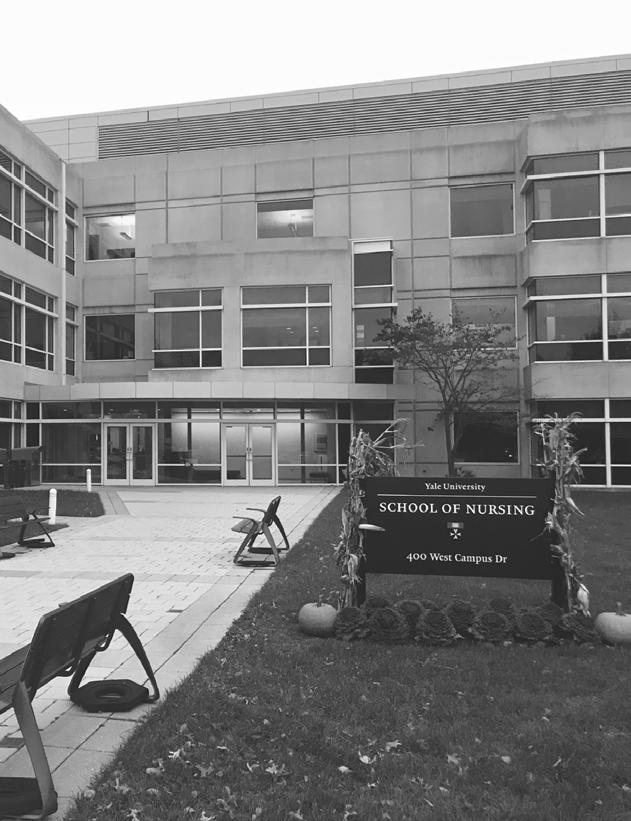
Emami told the News that she would take such claims over racism very seriously, and would prioritize a more inclusive culture at the school.
“I think that we really need to welcome and promote and encourage students to always question oppression, always question racism, and these are devastating,” she said. “And it’s time for us to interrogate that.”
Emami received her R.N. and doctorate degrees in the medical sciences at the Karolinska Institutet in Stockholm, Sweden.
Contact WILLIAM PORAYOUW at william.porayouw@yale.edu .
Spring fast raises funds for New Haven organizations
waive brunch and dinner swipes for April 15. All donations will then be evenly distributed to the four selected organizations.
“The YHHAP Fast has been a pretty large fixture in the Yale community and things got really unsettled during COVID,” said YHHAP Fast co-coordinator, Paul Douglass ’26. “We are trying to reposition the fast and put it back into a place where it’s a great way for students to contribute to their community.”
To encourage participation, local restaurants will offer Yale students incentives to eat at their restaurants and forego meal swipes on April 15. Sherkaan will offer a 15 percent discount to all participating students. Shake Shack will offer custard to students and a percentage of all proceeds will be donated to YHHAP, while Claire’s Corner Copia will donate directly to YHHAP. While students are strongly encouraged to support these local businesses, Douglass also urged student organizations to host community
events to share a meal. Some residential colleges, including Davenport and Branford, will also host college-specific events in support of the YHHAP Fast.
YHHAP works with Yale Hospitality and the University to determine the monetary amount reimbursed per meal swipe. Douglass told the News that although the full day of meal swipes is worth $42, YHHAP only receives $7.89. The coordinators of the Fast advocated for Yale Hospitality to increase the amount and offer transparency as, according to Douglass, “they really don’t break down how they came to that number.”
Dana Courtney, the director of business administration and finance for Yale Hospitality, did not respond to a request for comment.
“Yale is in a very unique position where we have a very tense relationship with the New Haven community,” said Jocelyn Ra ’22, a YHHAP Fast co-coordinator.
“Every Yale student wants to contribute to fixing that.”
Organizations that will receive the funds raised from the Fast include New Reach, Sunrise Cafe,
Project Access and New Haven Inner-City Enrichment Center. The donations will be distributed evenly among the four beneficiaries. All four are entirely new partners to the YHHAP Fast, according to Ra.
Douglass noted that the selection process was very different.
“We wanted to be very intentional about the organizations that we chose,” Douglass said.
Douglass and Ra worked alongside Jason Martinez — a program manager for the Community Impact Lab at the Yale School of Public Health — to get connected with several New Haven organizations. The co-coordinators then met with six of those organizations and conducted a screening process looking for what Douglass called “a cause that would benefit from [the] donations and have a substantial impact on people day to day.”
New Reach focuses on housing services to help households achieve stability and self-reliance. Sunrise Cafe offers a space for those experiencing homelessness and food insecurity to grab breakfast, rest
and connect. Project Access serves to increase access to medical care in underserved New Haven communities. The NICE Center provides several services ranging from food, hygiene and clothing donations to tutoring programs and utility bill assistance.
Located in the community room of the New Haven Police Department station, the food pantry NICE hosts is open once a month and serves about 85 families from the greater New Haven and Connecticut areas. Jamilah Rasheed, who co-founded the NICE Center, hopes to expand to more than once a month but said that the organization is in need of a larger volunteer base and funding for supplies.
The food pantry offers items “beyond canned goods,” Rasheed said, such as hygiene kits to meet the demand for basic necessities as well as fresh produce for more nourishing meals.
“I live in the neighborhood,” Rasheed said. “I see how people struggle to get by.”
Ra added that the organizations the Fast has regularly supported are now better funded and
not in as dire need which added to the decision to seek out new organizations. She found this to be a positive as they have watched the organizations “grow into something that’s impactful.”
Steve Werlin at Downtown Evening Soup Kitchen, a beneficiary of the YHHAP fall 2022 fast, spoke on how the Fast and other partnerships with YHHAP aid the organization. He emphasized that the goal is for Yale undergraduates to be engaged with the community in methods that are interesting and accessible to them.
“There are different opportunities to get involved and step outside the Yale footprint,” Werlin noted. “The Fast is one such way that is accessible despite your availability.”
A report released by Connecticut’s DataHaven found that food insecurity in Connecticut nearly doubled in 2022 from 10 percent to 17 percent.
Contact DALIYA EL ABANI at daliya.alielabani@yale.edu.
Dragomir Radev, computer science professor and AI expert, dies at 54
across the university,” Gerber wrote in an email to the News. “His openness to collaborations across fields was legendary and I believe that he is probably the only computer scientist to win the Gosnell Prize for the best empirical paper of the year in political science.”
Radev’s website, full of colorful links and featuring a small picture of the smiling professor watching over the page, expressed that same focus on facilitating connection.
“My long term goal is to build an infrastructure for computers and humans to interact in a fluent and natural way,” Radev
wrote in a simple .txt page on the site.
Radev earned his doctorate at Columbia University in 1999, moving on to teach at Michigan before then coming to Yale in 2017. He was awarded fellowships at multiple computer science associations, including the American Association for the Advancement of Science and the Association of Artificial Intelligence. In 2007, he co-founded the North American Computational Linguistics Open Competition, a contest for high school students interested in the field.
Brock wrote that Radev “believed deeply in the promise of
Yale and in its future,” and was passionate about leading his community at the University and beyond.
“He was tireless and spent long days working with students and carrying out his research,” Brock wrote.
Brock added fondly that Radev was “a fixture on Hillhouse Avenue,” often found tapping excitedly on his phone in communication with students and colleagues. Those same students and colleagues have since gathered online to share memories of Radev on a memorial website.
Collaborators and friends flooded a GoFundMe for Victoria’s medical expenses with support
this past week, writing comments about Radev’s kindness, intellect and dedication.
“I was chair of Yale CS when we recruited him,” wrote professor Joan Feigenbaum on the fundraising site. “I often think that my contribution to that recruiting effort might have been the best thing I ever did for Yale CS.”
Radev was deeply involved in the department, serving as the director of the Language, Information, and Learning at Yale Lab, the Yale Institute for Network Science and the Wu Tsai Institute for Neuroscience. Dan Spielman ’92, a Sterling Professor of Computer Science at
the University, emphasized the hole that Radev’s passing would leave in the department and in the field.
“From the moment he arrived at Yale he worked hard to improve our course offerings, to teach inspiring courses, and to recruit new faculty,” Spielman wrote in an email to the News. “He tried to improve every community that he touched… we won't be the same without him.”
A communal celebration of Radev’s life will be held soon, according to the School of Engineering and Applied Sciences.
Contact MIRANDA WOLLEN at miranda.wollen@yale.edu .
FROM
YALE DAILY NEWS FRIDAY, APRIL 7, 2023 · yaledailynews.com · @yaledailynews PAGE 5 DEAN FROM PAGE 1 “There are no traffic jams on the
ZIG ZIGLAR ACE SALESMAN AND MOTIVATIONAL SPEAKER
THE FRONT
extra mile."
1 Emami, listed diversity, equity and inclusion as her top priorities for her new role. / Yale Daily News
FAST FROM PAGE
FROM PAGE 1
RADEV
“I never said it would be easy, I only said it would be worth it.”
Treasury Secretary Janet Yellen reflects on Yale and public service
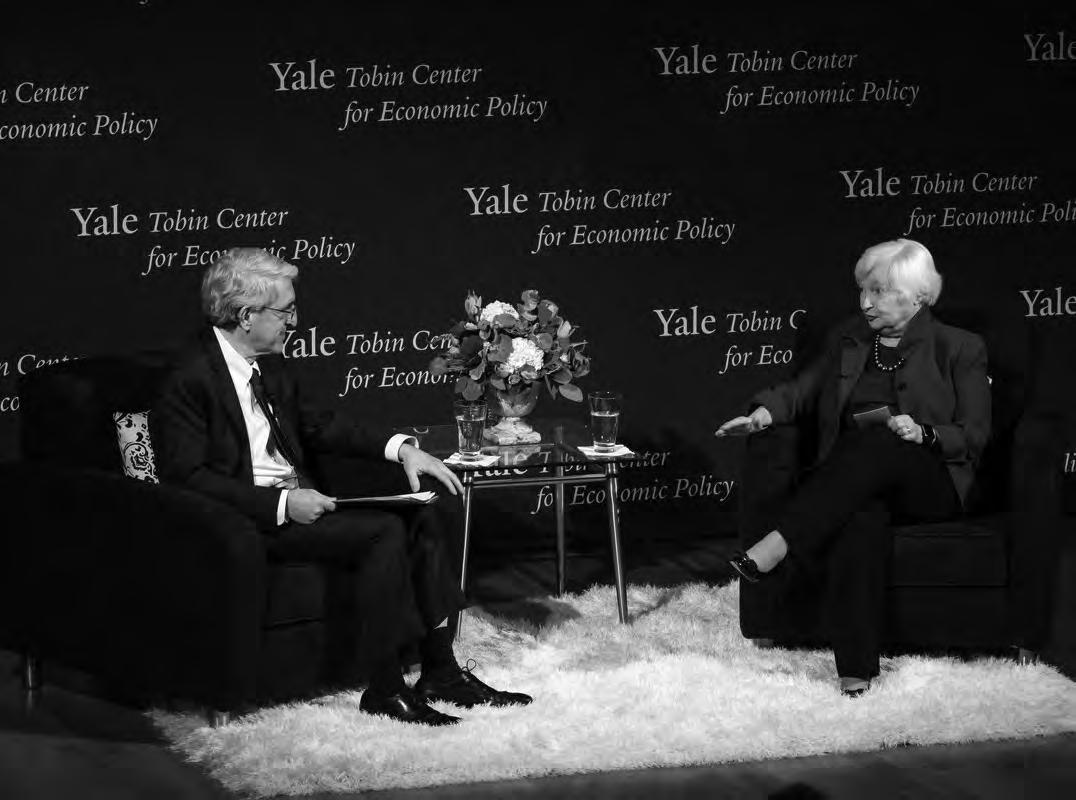
EVAN GORELICK & YASH ROY STAFF REPORTERS
Treasury Secretary Janet Yellen GRD ’71 reflected on her e xperiences as an economics student and teaching assistant for professor James Tobin in a recent talk on campus.
Speaking at Evans Hall on April 3, Yellen told a packed auditorium about being one the few women studying economics in the late 1960s at Yale. She also discussed her trailblazing career as the first woman to serve not only as Secretary of the Treasury but also as the Chair of the Federal Reserve and the Chair of the Council of Economic Advisors.
The Tobin Center invited Yellen to campus for her talk, which was moderated by University President Peter Salovey. During the event, Yellen explained that recent Yale research has informed the government’s decision making related to economic policy. The Tobin Center, which is located at 87 Trumbull street, opened its doors in January, and the center is now celebrating the end of its inaugural period.
“I’m very happy to be here to celebrate the opening of the Tobin Center and to see the Center have a wonderful new building that really integrates the economics department as well,” Yellen said. “I found myself using the [Center’s] resources, even in recent days, myself. It’s a tremendous asset to the world’s financial stability community.”
Tobin, who served as a member of President John F. Kennedy’s Council of Economic Advisors, won the 1981 Nobel Prize f or Economics for his work on financial markets “and their relations to expenditure decisions, employment, production and prices.”
Yellen shared with attendees that she decided to come to Yale for her graduate studies because Tobin visited her undergraduate alma mater, Brown University, to speak on his
research on lifecycle savings and balanced growth.
“I thought that this was the work I wanted to do so I came to Yale,” Yellen said. “The way he presented the data was beautiful … Tobin was a brilliant teacher, but he was also an inspiration because he had an incredibly strong sense of social justice.”
Yellen told attendees that Tobin’s work centered on ensuring that the field of economics focused on influencing policy and helping people rather than intricate mathematics.
According to Yellen, Tobin’s economic policy followed in the footsteps of John Maynard Keynes, whose economic theory was used widely by policymakers developing economic solutions to the Great Depression.
“He was worried about society’s well being, but also the well being of future generations and what we owe our children,” Yellen said. “Here, at Yale he was also responsible for developing an endowment policy where the really critical question was how much money can we use today versus stashing the money away to make sure future generations are taken care of.
While Yellen was a student at Yale, Tobin was her dissertation advisor and she served as his TA. Her dissertation at Yale was titled “Employment, Output and Capital Accumulation in an Open Economy: A Disequilibrium Approach.” Her notes for his lectures allegedly circulated among generations of Yale graduate students and became known as the “Yellen Notes.”
“In his class, he wanted students to be able to concentrate on understanding what the lecture was about and responding to questions and not spending all of their time taking notes,” Yellen told attendees. “So I would take notes and Xerox them and hand them out to students and this became kind of an underground classic reader for years after I
graduated where people would tell me that they had studied for his class from my notes.”
Yellen said that, when she started as a graduate student at Yale in 1961, she was one of just three female students in the economics program. While economics is more accepting of women today, Yellen said, there is a lot of progress left to be made. Even today, women make up only around one third of economics PhD graduates in the nation.
Near the end of the event, Yellen discussed the Biden administration’s economic philosophy of Modern Supply-Side Economics.
Yellen told attendees that modern supply-side economics aims “to boost economic growth by increasing labor supply, raising productivity, and reducing
inequality and environmental damage.” The federal government’s economic agenda, which is rooted in these principles, has won bipartisan support for its role in driving recent legislative victories, like the Infrastructure Investment and Jobs Act and CHIPS Act. One attendee, Ryan Wang ’26, told the News that he found Yellen’s rationale informative and convincing.
“I came into the talk not knowing what ‘modern supply-side economics’ meant, but Yellen did a nice job explaining policies and recent legislation in support of the new agenda,” Wang said. “Based on what she talked about — focusing not only on private capital but also on human capital, education, infrastructure, climate —
it seems like a very effective policy for achieving growth and also decreasing inequality.”
A recent Yale College graduate, Charles Simonds ’22 told the News that while he enjoyed the event and would have felt inspired if he “were a first-year thinking about studying economics,” he wished more of the dis cussion centered around actual economic policy.
Simonds added that, in any case, “Yale is pretty cool for being able to get her in a room.”
Janet Yellen was confirmed by the United States Senate as Treasury Secretary on January 25, 2021.
Contact EVAN GORELICK at evan.gorelick@yale.edu and YASH ROY at yash.roy@yale.edu .
Local bus riders express frustration with return of bus fares
orities for his committee, which he said showed that people “were not making the choice: instead of driving today, I’ll take the bus because it’s free.”
Lemar also added that he heard testimony during the committee process from Connecticut residents who were more worried about the buses running on time and being safe than the cost of the fare itself.
Lemar did not respond to multiple requests for comment from the News about the potential impacts of the reimposition of fares on poorer residents.
New Haven Mayor Justin Elicker told the News that he hopes to work with state and federal partners to bring the program back in the future, dubbing free public bus fares as a “win-win.”
“I ride the bus all the time, and what I heard time and time again throughout the pilot program is that people love it,” Elicker wrote to the News. “Residents are able to keep more of their hard-earned paychecks in their pockets, it promotes the use of public transportation and reduces the number of cars on our streets, and it makes an already convenient commute even easier, faster and more hassle-free.”
King Latif Manns, an unhoused person who rode the bus regularly before fares were announced, told the News that he thinks fares will hurt those of lower socioeconomic classes most. Latif Manns has stopped riding the bus since the change.
“I feel they should think about how many people they were helping and how many people suffer at the fact that the buses started faring people,” Latif Manns said. “It’s tax money, but also we the people are the taxpayers.”
Some bus riders also raised concerns over reduced transportation access for those with disabilities. All Connecticut buses are equipped with wheelchair lifts and ramps, and most are able to accommodate mobility devices like walkers.
One homeless rider, who was granted anonymity to protect his privacy, expressed disappointment with the return of fares. He is disabled and uses a walker.
“I’m disabled, I’m homeless,” he said. “I can’t walk to my appointments — we don’t want to pay.”
Senior citizens and those with “qualifying disabilities” are currently eligible for reduced fares, with all-day passes selling for half the normal price.
BY MEGAN VAZ & YASH ROY STAFF REPORTERS
Connecticut buses bore a new message for riders this weekend: “Fares restart April 1.”
After almost one year of free public buses across the state due to a surge in oil prices and record-high costs of living, travelers across the state had to resume paying fares for buses on Saturday. Connecticut legislation to extend free public bus fares stalled as New Haven State Representative Roland Lemar, who co-chairs the state legislature’s transportation committee, argued the state did not have enough funding to pay for the program.
Proponents of extending the state’s free public bus system have argued that the program helped alleviate cost-of-living worries as Connecticut residents have faced inflation of six to eight percent, an average rent increase of roughly
20 percent and stagnating wages.
Moreover, local bus riders have expressed frustration over the state’s decision to deprioritize accessibility while managing one of its largest budget reserves in state history.
“Statistically, this also translates to disproportionately punishing poor people, women, young people, seniors, and Black and brown people,” said local bus rider Stasia Brewczynski. “We need authority figures to stop thinking with carbrains and start looking for every opportunity to reward and incentivize people moving without private cars and trucks.”
Now that the fare-free program has expired, most travelers must pay $6.40 for an Allday 2 Zones pass, with prices increasing for each additional zone. Riders may also purchase 31-day passes, which range from $108.80 to $204 based on traveling zone range.
Free public buses “not a priority” for Lemar, state legislative transportation committee
Last week, Lemar told WNHH FM that while he supports the concept of free public buses, he wishes to change the funding mechanism currently used to pay for it.
When the state passed emergency measures to fight against rising oil prices and inflation, which included free bus fares, it utilized money outside of the normal state budgeting process of the general funds, according to Lemar.
“I want the bus service to be free— but I want the general fund to pay for it,” Lemar told WNHH FM.
Lemar argued that the state legislature can fund other initiatives to better encourage people to “ditch their cars” and use public transportation. He cited data that he reviewed during the legislative process to determine pri-
Residents speak of economic hardship caused by bus fares
Brewczynski argued that charging fares will discourage people from using buses altogether, which poses a problem in a city where most residents live in carfree or “car-light” households.
According to the nonprofit Datahaven’s 2023 Community Wellbeing Index for the greater New Haven area, about 34 percent of local adults making under $30,000 per year experience “transportation insecurity” without reliable access to a vehicle. Black and Latino households are far more likely to lack access to a personal vehicle, especially in those without any employed adults.
Some bus riders told the News that they are experiencing homelessness and heavily relied on the fare-free program for access to food, job opportunities and medical appointments.
Kate Chebik, who works at the community center MakeHaven, told the News that the workshop strategically chose to move its space to a downtown location due to its proximity to several bus routes. The move sought to maximize accessibility for all bus users, especially those who are most socioeconomically disadvantaged.
“New Haven had a real opportunity to be a model for public transportation with fare free buses,” Chebik wrote. “It seems logical that removing the cost of the bus makes the bus more accessible for those with limited incomes, and also moves to encourage ridership among all people.”
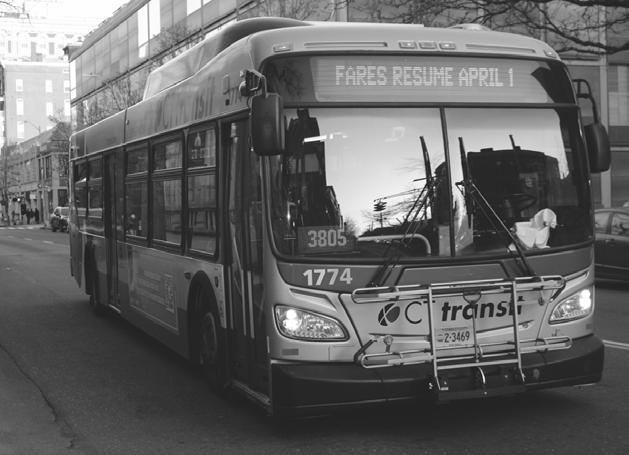
35 legislators serve on the Connecticut state legislature’s transportation committee.
Contact MEGAN VAZ at megan.vaz@yale.edu and YASH ROY at yash.roy@yale.edu .
PAGE 6 YALE DAILY NEWS FRIDAY, APRIL 7, 2023 · yaledailynews.com NEWS
MAE WEST AMERICAN ACTRESS AND SINGER
MEGAN VAZ / CONTRIBUTING PHOTOGRAPHER
After a year of free bus trips throughout the state, New Haveners — many of whom do not have access to private vehicles — must now pay for rides.
GIRI VISWANATHAN / PHOTO EDITOR
Yellen spoke about mentor James Tobin, being a woman in academia and her policy of modern supply-side economics.
Datahaven report reveals soaring disparities in residents’ wellbeing
BY MEGAN VAZ STAFF REPORTER
The nonprofit Datahaven released its latest Community Wellbeing Index report for the Greater New Haven region on March 3, exposing deepening disparities in the quality of life for residents of different demographic groups.
Locals of different racial backgrounds, income levels, residential areas and age groups were assigned “Wellbeing Index Scores,” which researchers calculated by assessing trends across a variety of social determinants. Factors taken into account included education access and outcomes, poverty rates, encounters with the criminal justice system, homelessness and experiences with the healthcare system, all of which demonstrated stark differences in the overall wellbeing of those living in the same region.
The city of New Haven scored 389 out of 1000 on the Community Wellbeing Index, far lower than the scores of other Greater New Haven towns — most of which scored above 900 — and the state as a whole.
“It’s sobering how some of the big issues of today are revealed in this survey, like the housing prices — how the rents have risen and just how high the cost burden is,” said Matthew Higbee of the Community Foundation for Greater New Haven, who helped write the report. “We just think that accurate and reliable data about our community is essential for marking progress.”
The report combined the individual responses of over 40,000 residents to Datahaven surveys and live interviews with records from local police departments, state and local departments of education and public health, housing and real estate agencies, the U.S. Census and other public sources.
Using such sources, the Index includes scores from 0 to 1000 on “community wellbeing,” which takes into account statistics on social determinants like homeownership and childhood poverty, as well as “personal wellbeing” based on community members’ self-reported experiences.
Within Greater New Haven, the Black and Latine populations received lower well being scores than the white population, which researchers and community figures attributed to a long history of systemic racism. The report also highlighted forms of racial segregation throughout neighborhoods that impact the quality of life, which Datahaven Executive Director Mark Abraham tied to redlining.
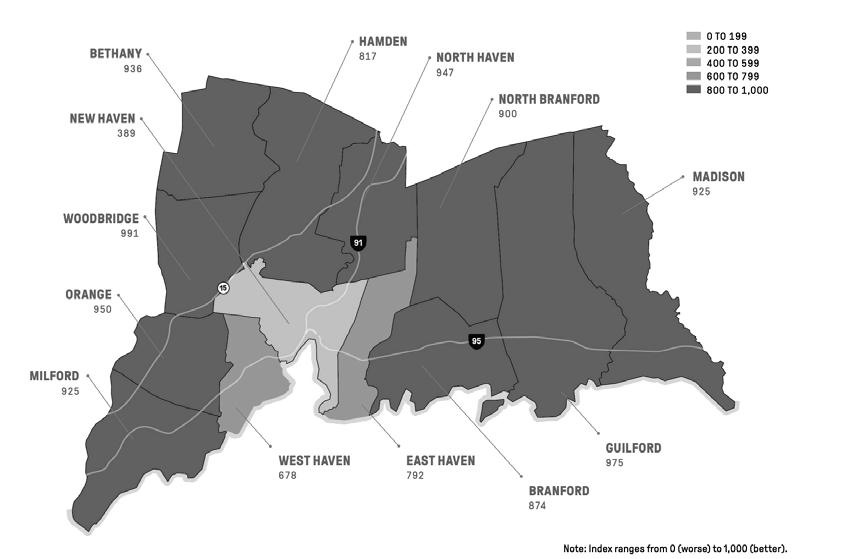
“Many neighborhoods in Connecticut for a long time wouldn’t allow people of color to move into them,” Abraham told the News. “And there are
many other policies that basically prevented especially black residents in the state from accumulating wealth over time. And that’s also particularly evident if you look at things like, does the neighbor have healthy trees and parks? So neighborhoods that are well off often have well maintained trees, and that affects your health.”
White residents of Greater New Haven are far more likely to live near other white people than any other demographic group, according to the report. Low-diversity, whiter neighborhoods were also more likely to be higher income.
New Haven residents generally experience more economic hardship than residents of neighboring towns and the state. According to the report, one-quarter of New Haveners live in poverty and 49 percent are considered low-income; in Connecticut, both the poverty rate and low-income rate are under half of the New Haven statistics.
“A lot of times people will think of Connecticut as a prosperous area, which it is overall, but you still have communities that are struggling within the state,” Abraham said.
In several areas, the report demonstrated the detrimental impacts of the COVID-19 pandemic on community-wide prosperity, as well as its role in exacerbating social disparities. From 2020 to 2022, home prices rose seven times faster than they
did in the previous two years; monthly rents rose over three times faster. Although governments aimed to alleviate the burden of housing costs during the pandemic through eviction moratoriums, monthly eviction filings eventually began to far surpass pre-pandemic levels.
“Chronic absenteeism” — which occurs when a student misses at least ten percent class time in a school year — skyrocketed due to the pandemic, most acutely impacting Black and Latine students, as well as those eligible for free and reduced price meals. Despite a return to in-person learning, rates have remained high.
“Regardless of where that trend goes in the next few years, there’s some sort of concern that it may have an impact on families for many years, because that was just a lot of school missed,” Abraham said. “Over five or 10 years, that can impact whether people will have graduated, or be prepared to go to college.”
Abraham additionally emphasized the importance of incorporating holistic measures of wellbeing into scores, which Datahaven prioritized through surveys and interviews with individuals. These measures focused on self-reported experiences, with the report finding relationships between one’s race or income and the likelihood of having reliable access to transportation, experiencing mental health problems and experiencing threats of
eviction, for example. A higher percentage of people of color reported having issues with each of these life factors than white people did.
Experiences with gun violence also heavily influenced residents’ trust in their local communities and feelings of overall safety.
13 percent of New Haveners reported witnessing a shooting in the past year, and 47 percent of residents stated they feared gun violence. While 87 percent of Connecticut residents agreed that they trust their neighbors, only 67 percent of New Haven residents said the same.
At a DataHaven report launch at the state capitol on March 13, researcher Kelly Davila spoke about the relationship between experiences with shootings, feelings of personal safety, incarceration and housing stability in regions, emphasizing t hat various wellbeing factors are intertwined.
“Research increasingly shows that housing stability — both in terms of financial stability for people in homes and also housing rehabilitation — is linked to a reduction in gun violence,” Davila said. “We see the same relationship and trends in areas where people report that it’s a nice place to raise children and areas where you feel safer at night.”
Surveys also asked for residents’ personal outlooks on community-wide issues, including whether they thought local chil -
dren would find success later in life, whether they believed other community members would find suitable access to employment and whether they approved of the local police and government.
As compared to 76 percent of white residents, 54 percent of Latine residents and 45 percent of Black residents in Greater New Haven said they approved of the local police, with an average of 68 percent approval across the region. The rate of police approval in Connecticut as a whole was even higher at 75 percent. In the city of New Haven, it was 42 percent.
Contributors and researchers emphasized that they hope r eport findings guide policymakers, especially with regards to addressing deep-rooted social and economic inequities.
“I hope [leaders] aim to have outcomes that reduce disparities that we see in the index based on race and where people live,” Higbee said. “It’s really everybody in every organization, both in government, nonprofit, and in the private sector, thinking about ways of working differently so that we can as a society start to reduce the disparities that we’re seeing and create more opportunity.”
As of 2020, New Haven is home to about 135,081 people.
Contact MEGAN VAZ at megan.vaz@yale.edu .
Protestors made four stops along the way, during which NHCM members sarcastically announced “awards” for various entities they believe have negatively contributed to the ongoing climate crisis.
“We are having this public action event today to call out the foolish actions of the city of New Haven, which must act on the climate crisis and specifically promote electrification initiatives,” said Elisa Cruz ’26, who co-led Monday’s protest.
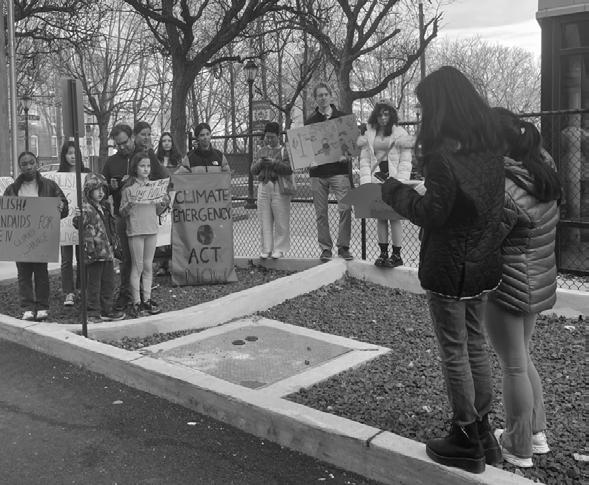
opting to use fossil fuels over renewable sources for heating.
“We cannot have new fossil fuels polluting developments such as this,” Joseph said as she presented the certificate before the group of protesters.
The News was unable to reach Epimoni for comment.
expressed dissatisfaction with the city’s lack of attention to bikelane projects as well as its focus on expanding parking space.
“In the end, the city is just not doing enough to counteract the overwhelming effects of transportation-related emissions,” Yu said.
BY NATASHA KHAZZAM STAFF REPORTER
For the New Haven Climate Movement, April Fools’ Day was not a cause for fun and games.
The NHCM —
youth-led envi-
The group met outside Olive and Wooster Apartments, a complex built by New York City real estate group Epimoni in May 2022. NHCM speakers claimed that the builders installed 450 new gas hookups in the apartments, which facilitate the transfer of natural gas from external sources into homes. While the apartment complex uses electric stoves, it still relies on gas-based heating systems. As of 2019, approximately 39 percent of residences in New Haven County use gas to generate heat, as compared to the overall Connecticut state average of 35 percent.
Patricia Joseph ’26, NHCM intern, presented Epimoni with the NHCM’s “450 Deadly Sins Award,” a recognition of the real estate group
At their next stop along the way to City Hall, the group presented their “Wrong Way, Dead End Award” to the city’s Board of Alders for “failure to improve the city’s transportation in the face of a climate crisis.” Transportation is currently the largest contributor to Connecticut’s carbon footprint, accounting for 38 percent of the state’s total greenhouse gas emissions.
Speakers acknowledged the city’s electrification efforts and ongoing strides to limit the use of fossil fuels, noting the Community Electrification Resolution. The resolution was passed by the Board of Alders in 2021 and committed New Haven to electrifying city buildings and vehicles by the end of 2030.
Lucy Yu, a first-year at Hopkins School in New Haven, explained that despite local efforts to electrify public buses, there are still 800 diesel-operated buses in use throughout Connecticut. She also
Joseph similarly acknowledged the city’s efforts, but drew attention to what she views as failures by the city to take initiative in proposing these changes. She said that much of the city’s environmental action has been launched only in response to various pushes by the New Haven Climate Movement. Additionally, she suggested that many of the city’s public commitments may not be entirely feasible as of now.
“In terms of seeing a plan … I think we still have a long way to go.” Joseph told the News. “These commitments can be promised, but we also face the challenges of not having enough staff to continue or to push for these projects.”
Last year’s Fossil Fools Rally was held on April 1.
Contact NATASHA KHAZZAM at natasha.khazzam@yale.edu .
a
ronmental action group — held their annual Fossil Fools Rally on Monday, with roughly 20 protestors marching from the intersection of Chapel Street and Olive Street to City Hall.
PAGE 7 YALE DAILY NEWS FRIDAY, APRIL 7, 2023 · yaledailynews.com NEWS
Youth activists lead “Fossil Fools” protest from Wooster Square to City Hall
“Whether you think you can, or you think you can’t – you’re right.”
HENRY FORD AMERICAN INVESTOR AND BUSINESSMAN
COURTESY OF ALTHEDA BASTIEN
COURTESY OF DATAHAVEN
The New Haven Climate Movement nodded to recent reforms while urging the city to continue employing improved environmental policy.
The nonprofit Datahaven released its latest Community Wellbeing Index report for the Greater New Haven region on March 3
YSPH revamps Climate Change and Health Certificate SCIENCE AND TECHNOLOGY
BY GIRI VISWANATHAN STAFF REPORTER
Around the world, health organizations have recognized climate change as a determinant of health and equity. In launching a newly revamped digital certificate program focusing on climate change, Yale’s School of Public Health hopes to convey just that.
Led by the Yale Center on Climate Change and Health, the Climate Change and Health certificate is an 18-week digital curriculum targeted at career professionals who aspire to learn more about the links between a changing planetary climate and global health outcomes.
Though the program was launched four years ago, its recent relaunch, according to its administrators, brings on a slate of new faculty and a refined focus on two key themes: the impacts of climate change outside the United States and an examination of climate change through the lens of social justice.
“Science is continuing to emerge and update, and so the goal is to give people access to the most recent science so that they’re aware of how [climate change] is impacting human health,” said Daniel Carrión, the academic director of the certificate program. “One of the opportunities to improve was to make sure that we are covering more content about other parts of the world, and then to do a more explicit job bringing in issues of
justice and equity as we think about climate change.”
The revamped Climate Change and Health Certificate is the continuation of an online certificate program launched in 2018 and initially helmed by Robert Dubrow, faculty director of the Yale Center on Climate Change and Health. With the redesign of the curriculum, Carrión takes over for Dubrow as the program’s academic director. This spring’s cohort will be Carrión’s first time facilitating the certificate program.
Historically, according to Lauren Babcock-Dunning, the director of online and certificate education at YSPH, cohorts have ranged from 80 to 100 students in each of the program’s eight previous iterations. The certificate has catered to professionals at di erent stages of their careers — from physicians and healthcare providers to epidemiologists, advocates and entrepreneurs.
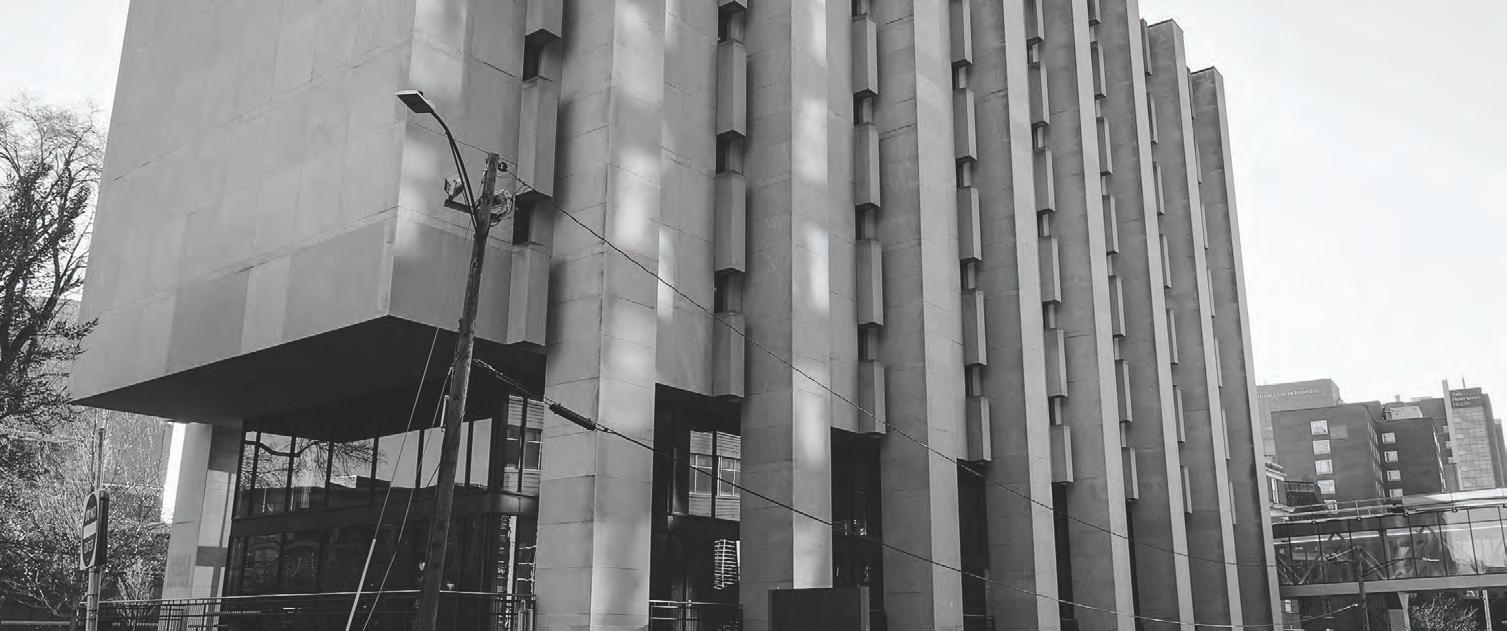
“There are so many professionals out there who are not going to go into an MPH on climate change and health but who still want to learn about this topic,” Carrión told the News. “We need the skill sets of not only clinicians, but of urban planners, of people in nonprofits doing work on environmental conservation, and so on to be thinking about this intersection of climate change and health. O ering this bite-sized certificate for folks who aren’t going to pursue an entire degree is a means of doing that.”
Throughout the online program, students take three six-week courses: “Introduction to Climate Change and Health,” “Climate Adaptation for Human Health” and “Communicating Climate Change and Health.”
The certificate program supplements asynchronous online content with live discussion groups moderated by a faculty member specializing in climate change and health.
Babcock-Dunning also emphasized a “remarkably high” completion rate for the program in the past — a metric she attributes to “proactive” measures to check in on students who have missed assignments and the accountability of a live class with professors who are well versed in the subject matter.
“A cohort of learners go through the program together so that they form strong relationships with each other,” Babcock-Dunning said. “And with the program faculty, they engage in discussions on the content. I think that forms a very collegial and rich learning experience”
As part of their redesign of the program, the program’s faculty members shifted the courses’ content to emphasize climate change impacts outside the United States and situate climate impacts in the context of social equity.
For example, rather than just examining climate change’s impact on Lyme disease in the United States, according to Carrión, the program now incorporates case studies of
malaria in sub-Saharan Africa or dengue fever in the Caribbean. Additionally, Carrión added, case studies include theories of structural stigma to examine the impact of a climate-related event on the health of marginalized populations.
In September, the certificate program hired Elena Grossman — a senior research specialist at the University of Illinois, Chicago, whose work focuses on climate change and health equity — as the lecturer for the program’s second course, “Climate Adaptation for Human Health.”
Grossman came to the Climate Change and Health certificate program from 10 years of research and program development into climate resilience in Illinois. In addition to Carrión, she is also joined by Kristin Timm, a research associate with the Alaska Climate Adaptation Science Center and the director of the certificate’s third course on climate communication strategies.
As part of the redesign process, Grossman sought feedback from previous program participants, who, she said, sought a “practical perspective.” As a result, she centered her course’s content around real-world examples of climate adaptation strategies, evaluating their e ectiveness, challenges and utilization of an “equity lens.”
“Thinking about these di erent types of strategies is using a matrix of health equity, climate change
mitigation and adaptation,” Grossman told the News. “How successful is a strategy at addressing climate change mitigation, adaptation and equity? Does it have a big impact on health equity? And how do you go about the process of selecting a strategy for a community?”
As students complete the program, according to Babcock-Dunning, they join a group of over 650 alumni. Many incorporate knowledge about climate change and health into their own careers. According to Carrión and Babcock-Dunning, some alumni changed their professional trajectories to focus on climate and health.
A few of those in academic positions have also launched their own programs in climate change and public health. One alum, according to Carrión, expanded their mental health practice to help address climate change-related anxiety.
“The reality is that climate change is a global problem with a big local impact,” Grossman told the News. “We can learn from other locations, and they can learn from us. This is a battle that we’re all in and it’s all hands on deck: we all need to listen and learn.”
The Climate Change and Health Certificate will launch its redesigned program on April 10.
Contact GIRI VISWANATHAN at giri.viswanathan@yale.edu .
Wildlife protection key to planetary health, Yale study finds
BY DAVID T. ZHU CONTRIUBTING REPORTER
From essential nutrient redistribution to carbon capture, wildlife and biodiversity play vital roles in protecting planetary health.
A study published last week in “Nature Climate Change,” led by Yale School of the Environment professor Oswald Schmitz, revealed that expanding wildlife restoration and conservation efforts, or “trophic rewilding,” could lead to the capture of an additional 6.41 billion tons of CO2 negative emissions each year. This is equivalent to 95 percent of the quantity specified in the Paris Agreement to limit global warming to 1.5°C above pre-industrial levels, slowing irreparable climate damage.
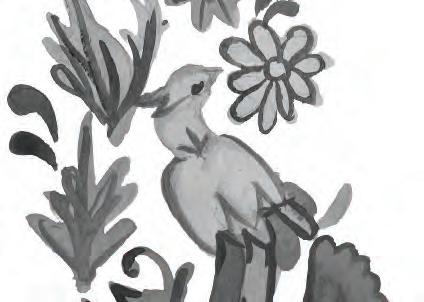
“Some people are saying that the way to get to net zero [emissions] is through geoengineering and technology to scrub CO2 from our atmosphere ... but we already have nature doing that,” Schmitz said. “The salient argument is that let’s use this tried and true technology — nature — to our advantage.”
This research was the product of an international collaboration between Schmitz and co-authors from eight countries across North America, Europe and Africa.
Specifically, the study highlighted the ecological roles of various large-bodied vertebrates, ranging from whales to wolves, in stimulating natural carbon capture and storage in a process known as “animating the carbon cycle.”
Their findings reveal that animals can increase plant and soil carbon retention by supporting
microbial and chemical carbon processing through their movements and waste production. This can influence fire regimes and permafrost patterns in their ecosystems, promoting carbon uptake, as well as distributing seeds and nutrients across diverse ecosystems. Schmitz proposed that trophic rewilding shows promise to overcome some of the shortcomings of current approaches to tackling the climate crisis, such as merely shifting to renewable energy sources. The “heat trapping” properties of the residual CO2 in the atmosphere renders such efforts inadequate when it comes to achieving the targets set forth by the Paris Agreement, according to Schmitz. In contrast, he explained, trophic rewilding can strengthen our capacity to achieve negative emissions, “which helps to suck up the bolus of CO2 sitting in the atmosphere that’s built up ever since the start of the Industrial Revolution.”
Schmitz also emphasized that developing solutions for improving biodiversity, climate health and human health should be “functionally interdependent,” rather than mutually exclusive. He points to the fact that expanding natural climate solutions to include biodiversity and wildlife protection could “co-benefit biodiversity conservation and ... support human livelihoods and welfare.”
He stressed that we must “change the current mindset” away from the perception that animal conservation and natural climate solutions are competing for finite spaces and resources, and towards a perspective that underscores the interconnected “human-nature coexistence.”
“You have the UN Climate Change Conference in Egypt and the UN Biodiversity Convention in Montreal ... who didn’t really talk to each other and are often competing for attention,” Schmitz said. “I think that there’s a lot of opportunities for synergizing these [agencies] together and emphasizing a functional interdependence on each other.”
Avery Naperala SPH ’23 and Nicole Smith SPH ’24, both in the Department of Environmental Health Sciences at the Yale School of Public Health, concurred with this. They suggested that biodiversity and climate change solutions are important not only for environmental health, but also population health.
Naperala, who works for Fair Haven Community Health Care says that they have been “prescribing nature” as a health intervention for patients. According to Naperala, there is extensive scientific literature that substantiates the benefits of spending time outdoors, which can help bolster immune systems and increase attention spans in children.
Smith emphasized the importance of empowering communities in the fight against climate change, pointing out the vital role that Indigenous communities play in promoting planetary health solutions.
“We need to refer to Indigenous People as the experts in the field and incorporate them more in policy decisions,” said Smith.
Schmitz went on to describe how integrating trophic rewilding in local communities can provide individuals with agency to join the battle against climate change. For instance,
local farmers and agricultural sectors are particularly well-positioned for this call-to-action, since they own large plots of land that can be used to restore American bison and other large animals for the purpose of carbon sequestration, according to Schmitz.
“You don’t want a grizzly bear roaming through a city, of course, but insects can do the same job in gardens ... so you can transform your backyard to improve carbon uptake,” Schmitz said. “In doing so, everybody can do their little bit and if you add that up across the globe, you get really significant results on the climate,” he adds.
Looking forward, Schmitz said he believes that investing in biodiversity and climate health is cru-
cial to sustaining planetary health. Restoring and rehabilitating landscapes and seascapes around the world promotes the longevity and wellbeing of both the environment and humanity, he emphasized.
“In the long run, the payo will be worth the e ort because I think more and more people will reconnect with nature and feel like they’re part of it rather than separate from it ... which will also benefit human health and welfare,” Schmitz said.
The Paris Agreement is an international treaty adopted by 196 Parties at the United Nations Climate Change Conference in 2016.
Contact DAVID T. ZHU at d.zhu@yale.edu .
PAGE 8 YALE DAILY NEWS FRIDAY, APRIL 7, 2023 ·yaledailynews.com
ILLUSTRATION BY ANNA CHAMBERLIN
Yale researchers have evaluated the impact of wildlife preservation and biodiversity on meeting Paris Agreement targets.
TIM TAI/PHOTOGRAPHY EDITOR
The Yale Center on Climate Change and Health’s online certificate program has been newly redesigned with an updated look at international health and social equity.
WEEKEND
ESPRESSIN' SOME THOUGHTS ON COFFEE
// BY ANDREW CRAMER
For years, I’ve held out. All the cool kids around me started doing it. I resisted, remembering my mom’s reminders not to cave to peer pressure at college. It felt a little hypocritical, because I knew she imbibed a couple of times a day.
Everyone seems to be doing coffee these days. They say it fuels them through the day or a late-night work session.
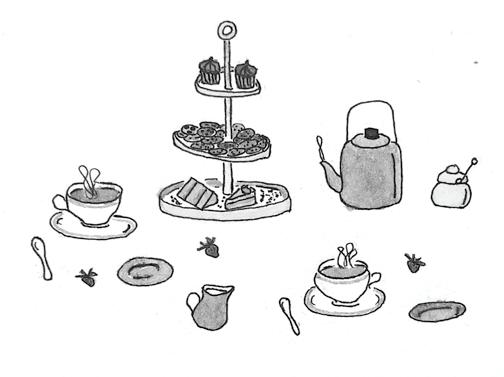
Not me. No, no, no. I’m running on the caffeine of life — and a cup of English breakfast tea with lemon each morning.
This coffee thing, it’s deeper than a caffeine craving. It’s a lifestyle. While you wince as that first sip of black coffee hits your lips at breakfast, I’m sipping from my soothing mug of tranquility to cleanse my soul before the day. Is that extra jolt worth the price you pay?
With regards to the morning cup o’ joe, I can let it slide, though.
To each their own, I guess. My grievances lie elsewhere: the afternoon coffee.
I love a good afternoon in a coffee shop as much as the next guy. Throw a couple bookshelves in back, post a sign up front with a quote that’s either somewhat liberal, mildly clever and funny or way too inspirational, and it really starts to feel homely. But, sometimes, my comrades-in-vibing make me feel unwelcome in what should be a wholesome space.
Why? What do I do to wrong these lovely folks? I speak my truth to power, that’s what I do. And my afternoon truth is almost always hot chocolate.
Laugh if you want. Sit on your high horse and ride on your saddle of superiority complex. But can you really look me — the hot-chocolate-drinking man behind the pen — in the eyes and tell me you’re not just a little bit jealous?

Don’t you yearn for that sugary taste of childhood winters: when you wanted to catch each snowflake on the tip of your tongue, when you came back and your ma told you to
take off your boots before you came inside, when your shirt stayed soggy for just a little too long so you warmed up by the fireplace and when tiny marshmallows floated on the surface of a beautiful chocolate sea? Unless you're from California, you know you do.
So why not embrace it? Are you afraid of the shame?
Have you fooled yourself into genuinely believing that your caramel macchiato makes you more sophisticated with me? Really? It’s just a corporate hot chocolate, isn’t it. I don’t mean to come across as lacking empathy. We all get tired, and coffee can seem like such an easy fix. However, and I don’t mean to try to gaslight you, that caffeinated energy boost — it’s all in your head.
You give me a cup of hot cocoa, I’m ready to go. I don’t care if it’s a sugar rush or my imagination that makes me feel that way. All that matters is that it gets the job done.
Listen, I’m not saying I’m never going to cave and join the dark side. After all, coffee is the consulting of drinks. We might think that it’s not for us, but, eventually, we all seem to realize that it’s in our future. I’m just seeing how long I can run on my youthful joie de vivre before I take to the mug to face the cruelties of the adult world.
Until then, it’s high time we re-normalized twenty year olds drinking hot chocolate, because I’m tired of your smirks and comments about how “it’s perfectly okay, all the third graders are drinking it, too.” Hot chocolate is delicious and coffee — excluding in ice cream form — seems pretty gross. So, yeah, I’ll have the hot chocolate, and you bet I want whipped cream on there, too.
Contact ANDREW CRAMER at andrew.cramer@yale.edu .
Brains and Brawn: A Ranking of the Residential College Gyms
// BY MADDIE SOULE
I’ve been asked to rank the residential college gyms, but first of all, let’s acknowledge the fact that Yale has upwards of 12 different gyms.
12. It’s astronomical.
Perhaps it’s a desperate attempt from Yale to produce both brains and brawn among “normies” (what varsity athletes like to call us student folk), or maybe it’s an attempt to deter complaints from gym rats who deem PWG too far a walk for their regular fitness regime. Regardless of the reasoning behind such excess, it’s my job to evaluate which resco gyms make the cut. And since I therefore took the liberty of visiting all of these on-campus luxuries, I will do my due diligence of sharing which gyms are actually worth the trek and which ones are best left to the members of their respective rescos.
Pierson*
As an unbiased PiersonKnight, I can honestly say that the Pierson gym is unequivocally the best. Two floors, open space, ceilings not too high or too low, a plenitude of cardio equipment, weights, bountiful space to do abs or body-weight exercises. If you don’t believe me, go see it for yourself.
Murray/Franklin
Objectively one of the ‘nicest’ gyms (i.e. has the most— and most updated—equipment), but also one of the least utilized. Do better pauliMurs (Get it? liMurs? Lemurs? I don’t) and Franklinites. And get better nicknames.
JE
The most gym-like gym. When you walk in, it actually
feels like you’re in a gym and not some sketchy basement renovation project. It’s got speckled rubber floors. Mirrors, but not too many mirrors. Decently nice equipment— not the best, but not the worst, either. Some wood. Some brick. Some cement. Some storage space. A hydration station. And a nice 2-in-1 trash and recycling can to boot. 10/10 recommend.
Morse/Stiles
Vaulted ceilings! Stone made to look like wood! Bands and other fun equipment! An abundance of mat space and cardio equipment! Natural light! Morsels have no excuse not to be cut.
Branford
So fun and fresh! Honestly did not expect that of Branford. I love that there’s one blue wall and a curved wall?? Genuinely so hip and cool?? Worth the trek for sure.
Silliman
By all metrics, ‘very nice’ (i.e. vanilla). Perfectly ‘adequate’ (i.e. mediocre).
TD

Multipurpose room: clutch. Cardio, abs, light weights, closed-off area with mirrors. Love it. Weight room? Subpar. But gets the job done. TDers can certainly get by, but I’m not sure if I would recommend it to an outsider.
Hopper
Tiny, like a one-room schoolhouse. Dumbbells: strangely plentiful. Stale abandoned coffee? Perhaps best left to the Hopper Poppers.
Berkeley
Too small. Too many mirrors. I felt like Raoul in Phantom of the Opera.
Trumbull
Also small, but sufficient. Equipment surprisingly updated! But severely lacks (i.e. absolutely no) sanitary products? Questionable.
Saybrook
The only gyms that were both vacant and whose lights were mysteriously turned off. And you heard me right— gyms. Those Saybrugians who don’t skip leg day are rewarded with a haunted, crouched-ceilinged annex exclusively outfitted with leg equipment which supplements the other gym, which at least has more than a mat and a leg-press.
That’s all for now, folks.
Happy lifting!
*I know it’s technically “Pierson/Davenport,” but let’s be real. We all know whose gym it is.
Contact MADDIE SOULE at maddie.soule@yale.edu .
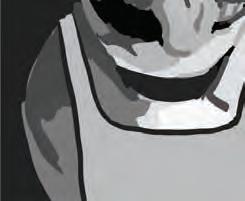
YALE DAILY NEWS FRIDAY, APRIL 7, 2023 ·yaledailynews.com PAGE 9 WKND Recommends Early grey with milk. // LIZZIE CONKLIN
//MADDIESOULE
Crew teams off to fast start
Yale women's lacrosse just keeps winning
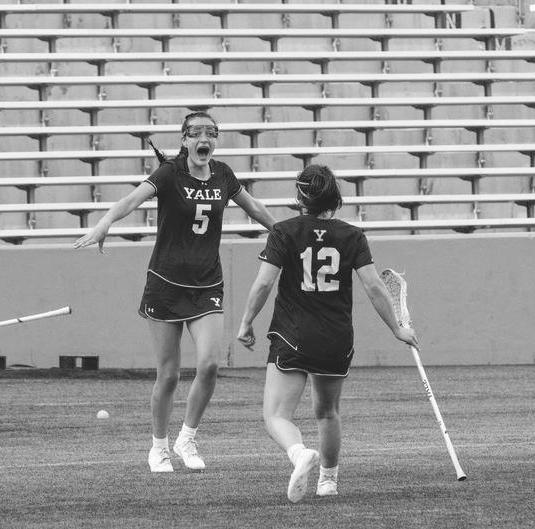
tinue to face strong teams, our success has come from our ability to focus on the little details (that often determine the outcome of the game) and play together.”
While the result was the same — a Bulldogs win — the way the team won was very different.
Army entered the game with a clear defensive gameplan to shut down Collignon, face guarding the Yale star the entire game and not allowing her any free space. However, this man-marking defensive scheme allowed the rest of the Bulldogs’ offense more room to operate, and they capitalized on it in a big way.
Without the offense running through Collignon as usual, three other Bulldogs scored hat tricks, with midfielder Fallon Vaughn ’25
leading the way with four goals in addition to two assists.
“Every single member of our team has an important role,” midfielder Alex Hopkins ’25 said.
“Individually, we are all very talented with the same motivation to win and advance. And so collectively, we play as a unit that leads to our tremendous success. Brown and Army are very good teams, but with our personnel and talent we were able to dominate.”
The wins set the stage for a dramatic trip to Philadelphia this weekend for the Bulldogs, as they will square off with No. 22 UPenn, the only other team undefeated in Ivy League play.
Contact SPENCER KING at spencer.king@yale.edu and PALOMA VIGIL at paloma.vigil@yale.edu .
national championships during his time in New Haven.
“Our team was very aggressive, which they had to be in those tail wind conditions,” Gladstone told Yale Athletics. “They were very poised, set into their base rhythm very well, and moved the boat. Overall, a great start to the season against really strong opponents. The first 1500 meters of the race was excellent. I was very happy to see our bow come across the finish line first.”
The goal for the team this year will be to add one more national championship to Gladstone’s total before he closes the book on his career.
While the heavyweight team enjoyed the sunshine and 80-degree weather in Sarasota, the lightweight team also began its season on Saturday on Lake Carnegie in Princeton, New Jersey.
In Princeton, the lightweight team faced off with the U.S. Naval Academy in five races, coming away with wins in all of them except for the 5V.
The varsity eight won the Eads Johnson Jr. Cup for the 11th year in a row, defeating the top Navy crew by just half a second in an exciting backand-forth race.
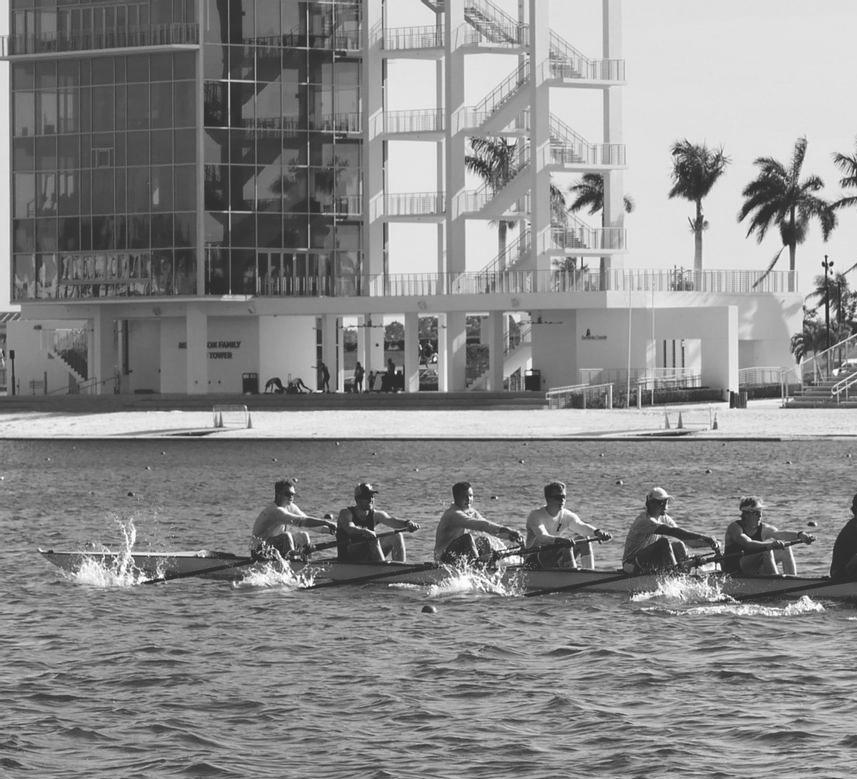
“Just when you thought this regatta could not get more
intense and exciting, it did,” head coach Andrew Card said to Yale Athletics. “At the end of the varsity race, we were fortunate to find ourselves on the right end of the result but only just.”
With the 2V, 3V and 4V all also winning their races, the Bulldogs were able to recapture the Jon Van Amringe Cup for winning the overall competition.
With a time of 5:35.5, the varsity lightweight boat was only 1.5 seconds short of beating the lightweight crew Lake Carnegie course record of 5:34.0.
Contact SPENCER KING at spencer.king@yale.edu
Bulldogs beat St. John’s
’23 dominated in doubles, gaining victories of 6–3 and 7–5 respectively. In singles, Vignesh Gogineni ’26 defeated Sergio Molina with a 6–3, 6–2 win.
“The highlight of our match was probably just winning my singles match and getting a fast point on the board,” said Gogineni.
Dean’s singles match against Diogo Marques went to the third set before being pulled after the Blue and White won their fourth point. Li defeated Giuseppe De Camelis and Oberg trounced Ryota Kaneda, taking away wins of 6–4, 6–4 and 6–3, 6–2, respectively.
“I think the highlight was Eric Li getting his first dual match win at No. 5 singles,” head coach Chris Drake said. “He was also able to clinch the match by earning our fourth point.”
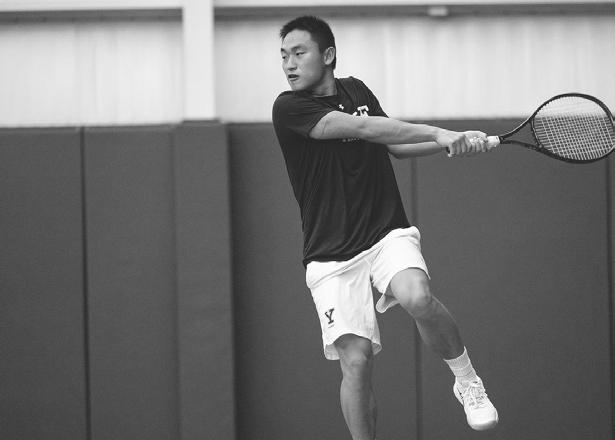
Prior to the St. John’s match, the team competed throughout California, where Yale took on the University of California, Los Angeles, the University of California, Santa Barbara, Cal Poly and Santa Clara. While they collected two losses in their first two matches of their California saga against UCLA and UCSB, the Bulldogs ended the trip with two wins against Santa Clara and St. John’s.
“Our win over Santa Clara was a nice statement as they beat us 4–0 last year,” Drake said. “This year we were able to turn the tables and beat them soundly. It was nice to see a direct comparison from last year and see the progress we’ve made.”
Going into their match against the Elis, UCSB was ranked No. 38 nationally. The Blue and White nearly eked out a win over the Gauchos, ultimately falling just
3–4. Similarly, the Elis almost toppled the No. 34 Bruins in Los Angeles, only losing by one point. This weekend, the team will start conference play. They will host Harvard University on Friday and travel to Hanover to take on Dartmouth College on Sunday.
“I’m most excited for Penn because it’s a great opportunity against a highly ranked team on our home courts,” Gogineni said. Columbia leads national rankings for the Ivy League, currently ranked at No. 10. They are trailed by Harvard at No. 11, Cornell at No. 29, Princeton at No. 49, Penn at No. 60 and Yale at No. 72.
Within the Ivy League, rankings shift slightly. Yale comes in at No. 6, ahead of just Brown and Dartmouth. Harvard tops the table.
Contact GRAYSON LAMBERT at grayson.lambert@yale.edu .
Elis win Marchiando team race
SAILING FROM PAGE 14
with a final dominating Yale score of 13 wins and one loss,” said Sih, Egan’s crew member.
Fellow northeastern schools Harvard University and Roger Williams University were not in the same division as Yale at the Marchiando Team race. For this reason, Sih said he is “excited” to face these competitors this weekend at the New England Intercollegiate Sailing Association team race championships.
The women’s team has also been producing results while racing against their Rhode Island competitors.
At the Dellenbaugh Women’s Team Race this weekend, the Yale women’s sailing team took second behind fellow NEISA competitor and rival Brown.
“At this point in the season, we're looking to build consistency,” skipper Emma Cowles ’25 told Yale Athletics. “It was defi -
nitely a necessity in the shifty c onditions at Brown. Saturday had lighter and very shifty winds, while Sunday had much heavier winds. Overall as a team, we are happy with our performance.”
The women’s team will return to the water at the Yale Women’s Team Race in Branford next weekend as they try to get back to their winning ways.
“There is still room for improvement, but we have shown that we are one of the strong NEISA teams,” Megan Grimes ’24 said.
Both teams are heading into crunch time as the New England Team Race Championships come up for the women and the NEISA Team Race Championship comes up for the team racers.
All of Yale Sailing is looking to end their season on a solid note at the ICSA Open Team Race National Championships at the end of April.
Contact PALOMA VIGIL at paloma.vigil@yale.edu .
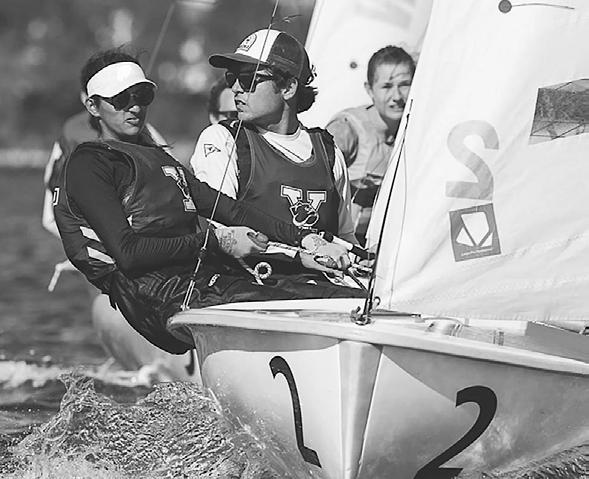
SPORTS PAGE 10 YALE DAILY NEWS FRIDAY, APRIL 7, 2023 · yaledailynews.com
W. LACROSSE FROM PAGE 14
YALE ATHLETICS
The varsity lightweight boat was only 1.5 seconds short of beating the lightweight crew Lake Carnegie course record.
YALE ATHLETICS
The wins set the stage for a dramatic trip to Philadelphia this weekend for the Bulldogs, as they will square off with No. 22 UPenn.
CREW FROM PAGE 14
M TENNIS FROM PAGE 14
“[Angel Reese] should never be criticized for what she did. I’m just one that competes, and she competed… I’m a big fan of hers.” CATLIN
CLARK, IOWA WOMEN’S BASKETBALL SUPERSTAR
YALE ATHLETICS
Within the Ivy League, rankings shift slightly. Yale comes in at No. 6, ahead of just Brown and Dartmouth.
YALE ATHLETICS
All of Yale Sailing is looking to end their season on a solid note at the ICSA Open Team Race National Championships at the end of April.
Environmental Film Festival discusses climate change through art
sil fuels: aircrafts, motor races, diesel locomotives and even the oil fields themselves.
“The way [climate change] was talked about was as something you could either believe or not, but it wasn’t something you could prove,” Fortenberry said.
“It was this ineffable spiritual thing that lay beyond science.”
For Fortenberry, “Extrapolations” serves as a way to counteract these past media efforts, instead serving to bring attention to the dangers of climate change.
The “Extrapolations” panel also featured Anna Jane Joyner, founder of Good Energy — a nonprofit story climate change consultancy.
Some of the panel’s other works also focused on the pervasive nature of climate. Documentaries like “Allergy Alert: P aranoia in Our Immune System” traced health phenomena as mundane as the increasing prevalence of allergies traced to failures in urban planning, an overreliance on harmful cleaning products and our growing alienation from the environment.
BY HANWEN ZHANG, NATASHA KHAZZAM AND SOPHIE MOLDEN STAFF REPORTERS AND CONTRIBUTING REPORTER
The Yale School of the Environment kicked off its 15th a nnual Environmental Film Festival last week.
The showing comprised a total of six panels and screenings that took place between Mar. 29 and Apr. 1. The festival showcased films and documentaries that touched upon various environmental issues, ranging from community health to forest management. Each event was followed by open dialogues between filmmakers and community members, who discussed the media’s role in the environmental crisis.
“We try to attract…different people from the community with different themes and…really [focus] on films that are telling you an important story,” Sam Feibel ENV ’23, one of the event organizers, told the News.
While this was the second in-person film festival since before the COVID-19 pandemic, this was a year of many firsts for the event. The festival offered its participants the option to attend virtually via Zoom, which led to some of the highest turnouts in recent memory, according to Feibel. He added that it also engaged
more deeply with the New Haven community than it has in the past, hosting a kid-friendly viewing and nature craft event at the Dixwell Community House.
The opening night featured the new Apple TV+ film series entitled “Extrapolations.” The series follows eight separate characters between the years 2037 and 2070, “extrapolating” a near future in which the climate crisis has drastically altered human life. Executive producer of “Extrapolations”
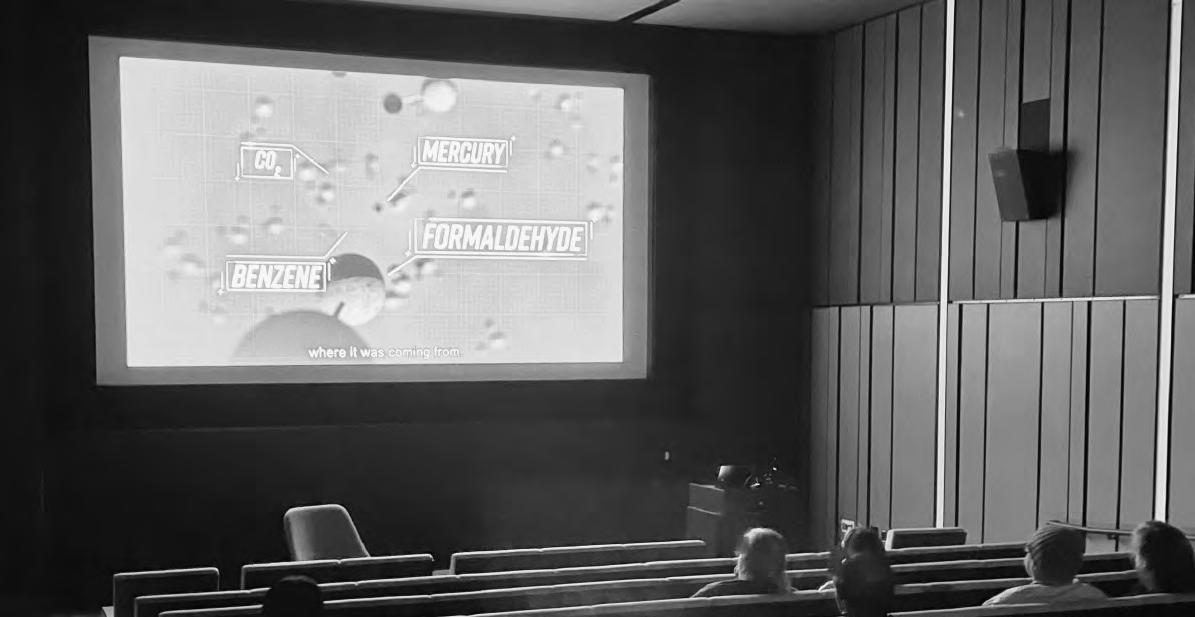
Dorothy Fortenberry discussed the series with School of the Environment professor Anthony Leiserowitz, touching upon Hollywood’s role in climate communication.
Fortenberry said that “Extrapolations” was structured around the following question: “What if we just keep on going the way we’re going?” Rather than use the environmental crisis as a mere premise, “Extrapolations” treats climate change as the “main character,” centering the entire series around the issue.
Fortenberry and Leiserowitz also discussed the role of the media in counteracting the “spiral of silence” around climate change, directly bringing the issue into popular consciousness and amplifying its significance on a wider stage.
“I think it’s important to note it’s not just that the people
who want to talk about climate change have been ineffective, it’s that people who want people to not talk about climate change have been incredibly effective,” Fortenberry said. She explained that she believes climate change is widely portrayed as being rooted in belief — whether individuals “believe” that climate change is occurring — rather than in fact.
According to Fortenberry, this phenomenon was a product of media campaigns by individuals who sought to prolong the oil and gas industry.
Leiserowitz quoted a 2021 report from Yale Climate Communication which found that 66 percent of survey respondents only hear about global warming in the media at once a month or less often. Another report mentioned at the event was published by Joyner’s nonprofit story consultancy, Good Energy. The report analyzed thousands of scripts from 2016-2020, finding that just 2.8 percent mentioned climate change. The reason, says Fortenberry, is a successful climate communications campaign that has been paid for and engineered by oil and gas industries.
Shell Oil has been funding and producing films for almost 90 years, with most plotlines celebrating all things powered by fos -
Good Energy has created an open-source “Playbook for Screenwriting in the Age of Climate Change,” which offers an i ntroductory guide for screenwriters stepping into the world o f climate change within entertainment. The playbook aims to ease entry into the daunting topic. Joyner and Fortenberry agree that not enough producers are convinced climate is a nonnegotiable topic. Joyner explains the shared sentiment by stating, “If you’re not including climate [in your story], you’re making science fiction.”
This year’s festival also placed topical emphasis on climate change’s relation to social justice.
“The Cost of Progress: Community Health in a Changing Climate” panel spotlighted the deep inequities that were both cause and consequence of ecological destruction. Documentaries such as “A Tomorrow for Tonawanda” followed the destructive health and economic legacies of a coal power plant on the western New York town, while “Children of Lead” hauntingly exposed the reality of heavy metal pollution in Cerro de Pasco — a Peruvian town wracked by multinational lead and zinc mining operations.
Hannah James SPH ’24, an attendee of the panel, noted that the films created resonant “synergies” with her coursework. She said that she was grateful the film festival highlighted issues of social and environmental justice, explaining that she believes climate solutions and social progress are “inextricably linked.”
“As [an] MPH student [majoring] in environmental health science … these films really resonated with me,” Zhen Liu, an attendee at the panel, told the News. “[It] reminds me about the unintended health impacts of manmade chemicals … which needs urgent regulation and awareness.”
Liv Yoon, assistant professor at the University of British Columbia and filmmaker behind “A Tomorrow for Tonawanda,” spoke to the disconnect between citizens and policymakers. Yoon explained that film’s coverage of climate injustice — despite often being perceived as reactionary — is a way to deliver popular opinion to policy makers.
Work for the film festival usually begins months in advance, and entails a long process during which filmmakers submit their works to be curated for the festival from a pool of hundreds of films. Despite the difficulty of choosing out of so many “great films,” Feibel explained that the selected works are intended to invite the viewer to learn about climate change in an “engaging way.”
“That is one of the great things that narrative can do; is to help us show not just people taking action, but building the world we actually want to live in, not the dystopia we’re trying to avoid,” Leiserowitz said during his panel.
The Yale Environmental Film Festival is supported by the Yale School of the Environment, Yale School of Public Health, Yale Environmental Humanities and Yale Office of Sustainability, among others.
Contact HANWEN ZHANG at hanwen.zhang@yale.edu, NATASHA KHAZZAM at natasha.khazzam@ yale.edu, and SOPHIE MOLDEN at sophie.molden@yale.edu.
first female class
ERITA CHEN CONTRIBUTING REPORTER
Connie Royster ’72 enrolled at Yale College in 1969 — the year the institution first went co-ed.
One of only eight Black female sophomores admitted at the time, Royster would later be elected to a leadership position in the Yale Dramat, graduate cum laude, found a major minorityand women-owned New York law firm and serve as director of development at the Yale Divinity School. Historian Anne Gardiner Perkins ’81 chronicled R oyster’s undergraduate experience in her book “Yale Needs
Women: How the First Group of Girls Rewrote the Rules of an Ivy League Giant.”
On March 30, Gardiner Perkins joined Royster for a discussion circle held by Jackson Women, a student group for female-identifying students at the Jackson School of Global Affairs. The talk centered around the history of women at Yale, as well as Royster’s experience in what Perkins once dubbed as “the oldest men’s club in the nation.”
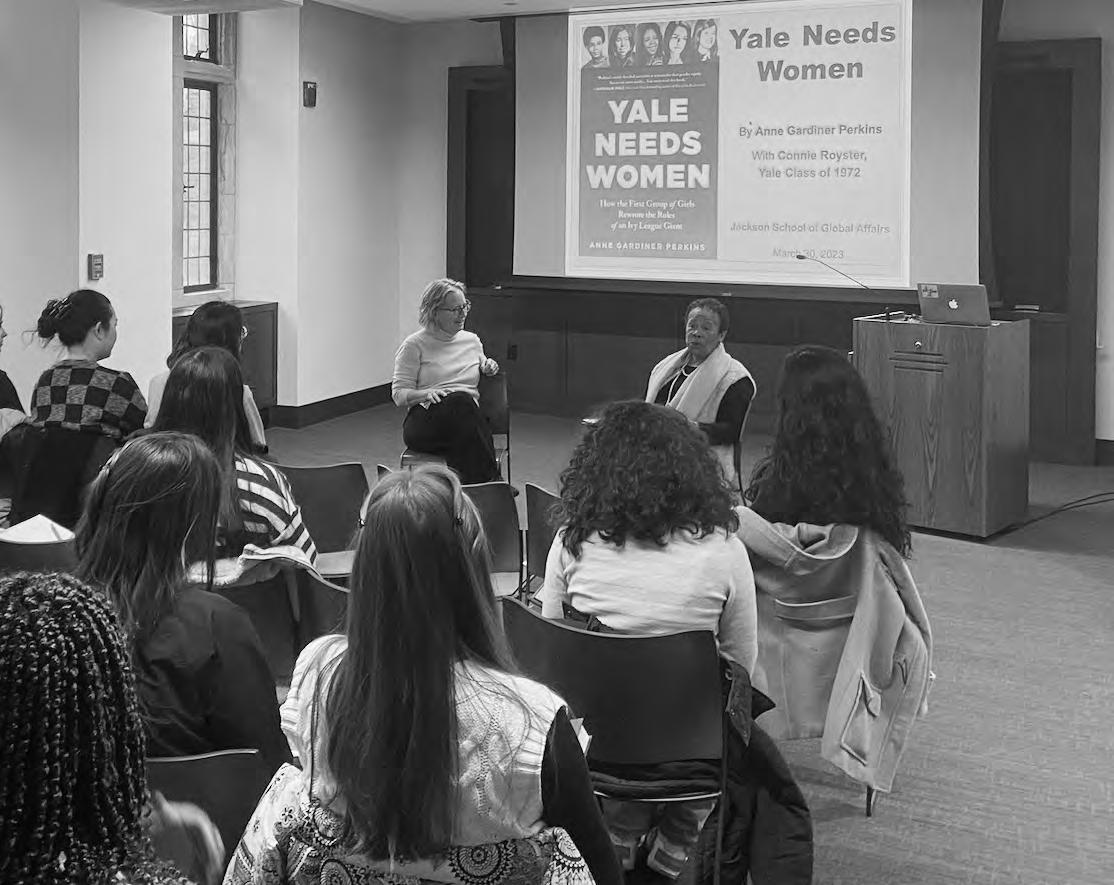
“Yale admitted women who were not afraid of stepping out,” said Royster. “[We] had enough experiences … to not be quashed by this place that had been dominated for 250 years by men.”
Gardiner Perkins began the event with a slideshow presentation outlining the first class of women in Yale College, which had remained all-male longer than any other college in the United States. Gender discrimination was “perfectly legal” in 1969; the 14th Amendment ’s provision for equal protection under the law had not yet been judged to apply to women, while the Title IV protections of the 1964 Civil Rights Act applied to race but not gender.
Yale already had female graduate students, but they composed less than 10 percent of all the total student body. Sexual harassment by male professors was a serious issue, Gardiner Perkins said, and women were prevented from participating in most extracurricular life, from all competitive sports to marching band.
Jackson School of Global Affairs student Paulina Prasad JGA ’24 said it was striking “how recent all of this happened.”
“Sometimes we think of gender segregation and racial segregation as things of the past, but really it happened just about 60 years ago,” Prasad said. “Being around people who went through it really contextualizes how recent that was and where we are at Yale as an institution.”
Gardiner Perkins proceeded to ask Royster about her “sources of strength” during her time at Yale.
“I grew up in New Haven, so I had family here,” said Rosyter. “I also had classmates who would have been a year ahead of me who had been accepted to Yale, so I had a few friends already here … I knew I had those folks who were cheering me on.”
Moreover, she had the arts. Royster found a mentor figure in a dance instructor at the drama school, and got involved in the Yale Dramat, which had included women as actors in its productions prior to 1969.
Gardiner Perkins and Royster also discussed certain figures at Yale who supported the new female undergraduates.
Elga Wasserman, special assistant to the President for the Education of Women who oversaw the first few co-educational classes, was a “force of nature,” Royster remembered. Though she was given “no budget except for a part-time secretary,” Wasserman supported the secu -
rity of female students, fought t o ensure that Mory’s admitted women and issued annual r eports across campus that raised awareness about Yale’s inadequate female population.
Gardiner Perkins additionally highlighted the work of Philip and Lorna Sarrel. Due to Yale’s fear of pregnancy scandals among its new co-ed student body, the Sarrels founded Yale’s gynecological service and sex counseling service.
“Though it was against the law in Connecticut for unmarried women to be given access
t o contraception, Phil handed it out to anyone who wanted it,” Gardiner Perkins noted. “They also talked with women about their relationships and created a really safe space for women to talk about sex at a time when there was a lot of pressure on the first year women to sleep with young men, whether they wanted to or not.”
The talk concluded with students asking for both alumnae’s advice on occupying new spaces for the first time, given Royster’s background and Gardiner Perkins’s experience as the first
female editor-in-chief for the Yale Daily News.
Royster and Gardiner Perkins highlighted the need to be fearless, sharing that they had to find their strengths and confidence in their own voices.
“I think you need to be who you want to be,” said Gardiner Perkins. “That’s their problem if they don’t think you are measuring up.”
The event was held in Room 136 of the Humanities Quadrangle.
Contact ERITA CHEN at erita.chen@yale.edu .
PAGE 11 YALE DAILY NEWS FRIDAY, APRIL 7, 2023 · yaledailynews.com NEWS
Anne Perkins ’81 and Connie Royster ’72 discuss legacy of Yale’s
“Nothing is impossible, the word itself says ‘I’m possible’!”
AUDREY HEPBURN BRITISH ACTRESS
COURTESY OF MANUELA NIVIA
On March 30, the Jackson Women group held a discussion with two members of Yale’s first undergraduate class of women.
HANWEN ZHANG/CONTRIBUTING PHOTOGRAPHER
The Environmental Film Festival at Yale fostered dialogue about the media’s role in addressing the ongoing environmental crisis.
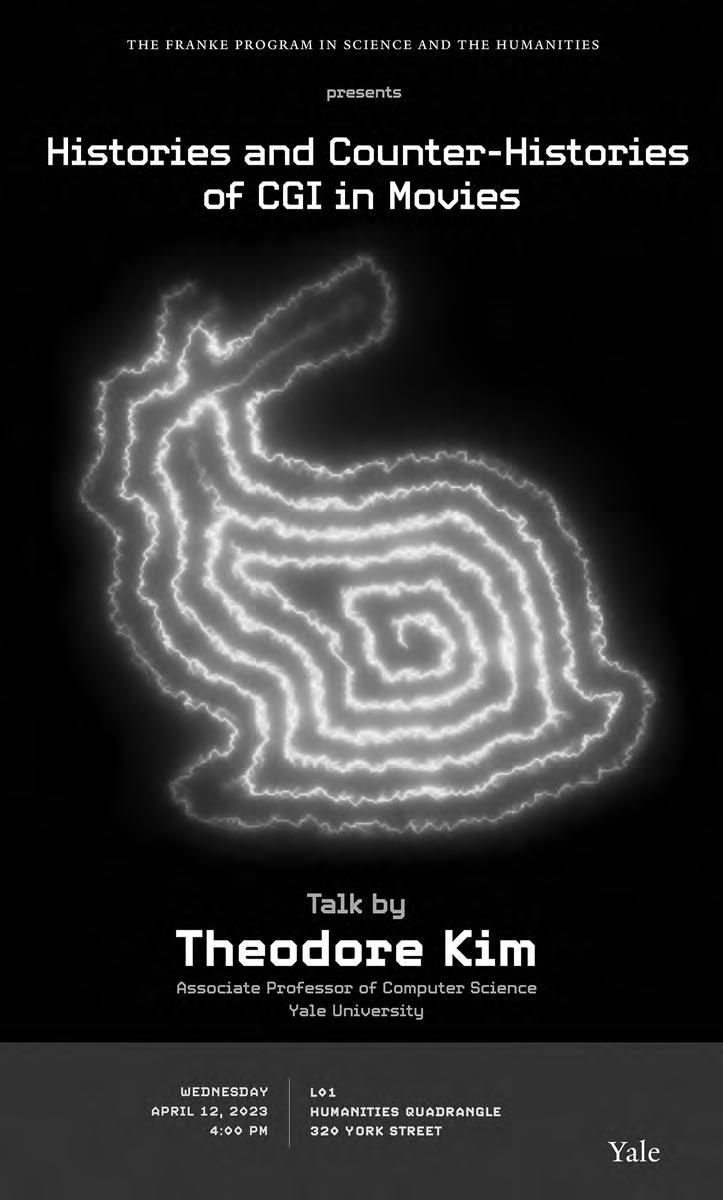
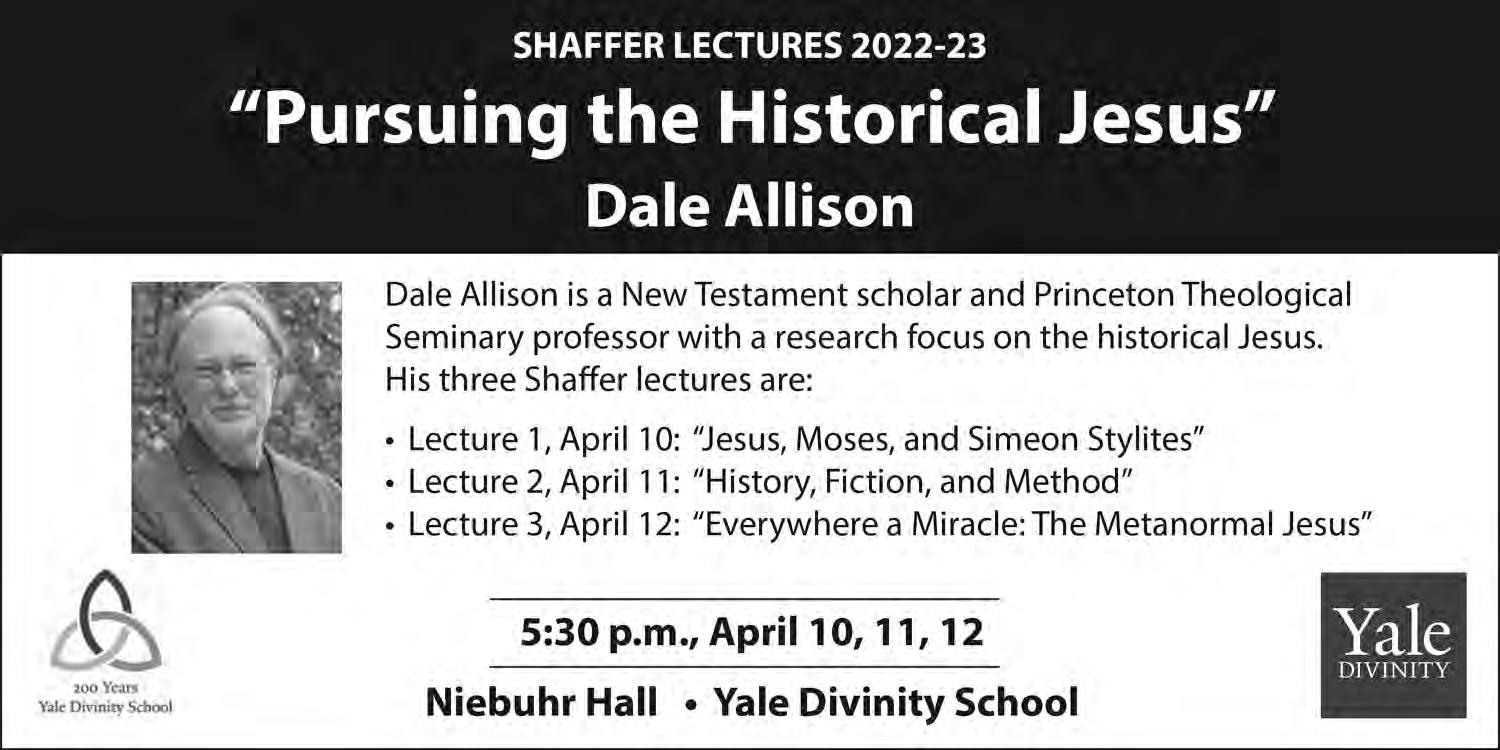
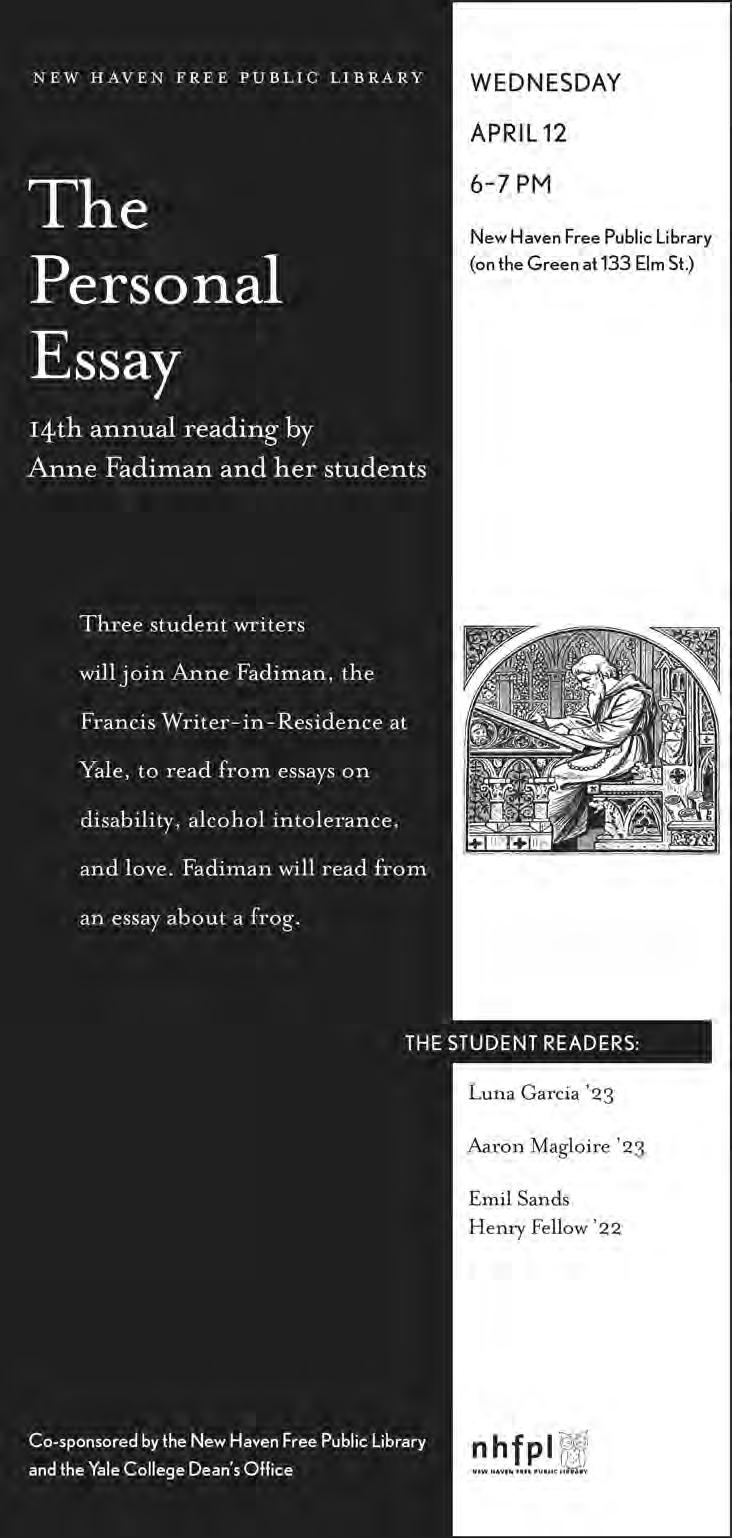
PAGE 12 YALE DAILY NEWS FRIDAY, APRIL 7, 2023 · yaledailynews.com BULLETIN Believe you can and you’re halfway there. THEODORE ROOSEVELT 26TH U.S. PRESIDENT Mini 9 1 C 2 H 3 E 4 M 5 O 6 R O N I N 7 A D D L E 8 N O O K S 9 E R R S ACROSS 1 Oncologist's treatment 6 47 of these star in a Japanese epic 7 Mess with 8 Crannys, etc. 9 Makes a mistake DOWN 1 Tall construction equipment 2 Character who only says their name 3 The forest moon 4 Soy, oat, and dairy are all 5 Alternative to twos and threes Mini 10 1 2 3 4 5 6 7 8 ACROSS 1 Can be supported by a keystone 5 Royally popular memoir 6 Of light of sight 7 Armada component 8 Defibrilators DOWN 1 Company 0-1 v. Taylor Swift 2 Left a starred review 3 Yelps 4 Prefix indicating 100 5 Place to crash
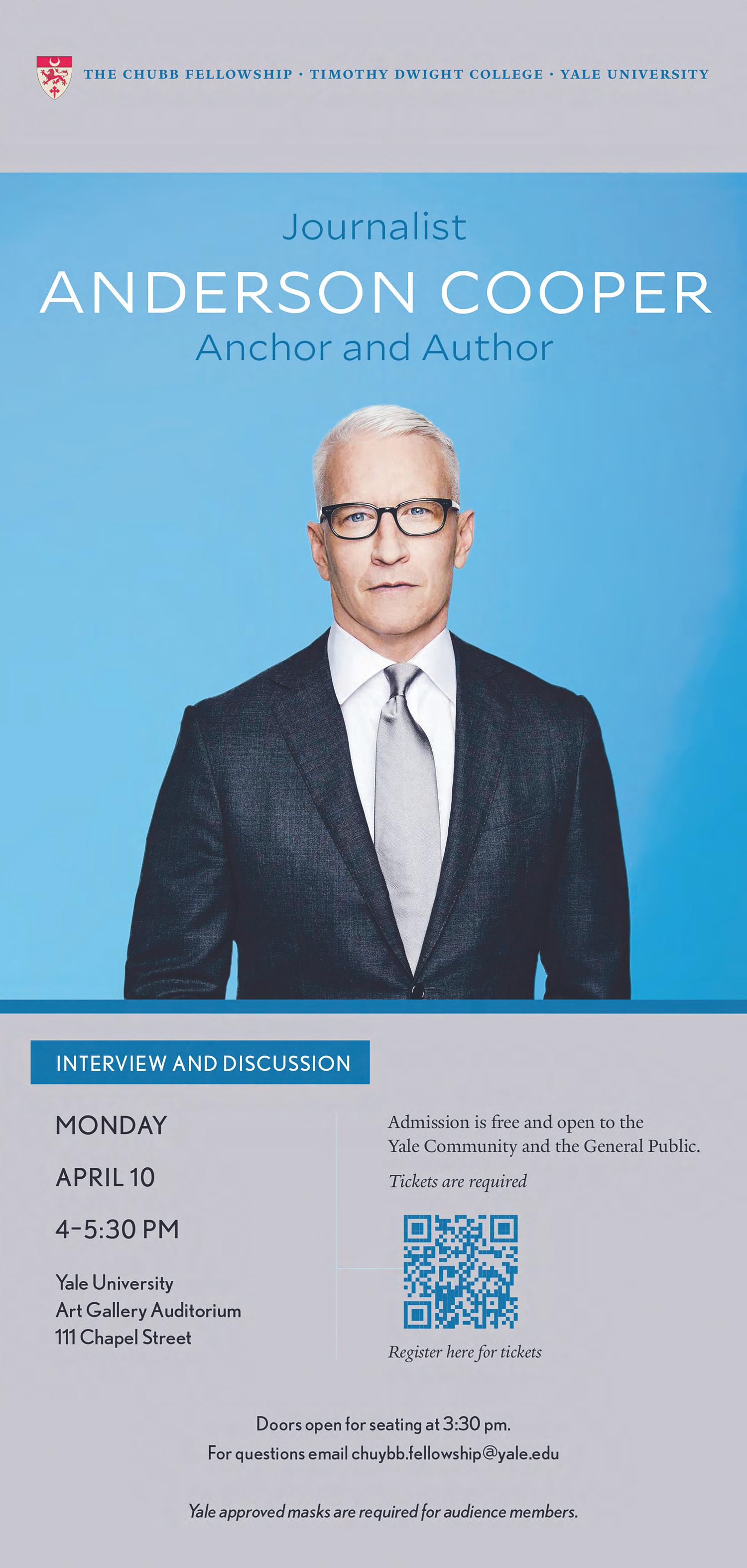
AD · yaledailynews.com
SPORTS
M. LACROSSE UP AND DOWN WEEK FOR YALE-

The Yale men’s lacrosse team entered the season with sky-high expectations. Coming o a tough loss at Princeton two weeks ago, the Elis lost 17–16 at Penn before a win against Boston University.

SOFTBALL ELIS WIN SECOND STRAIGHT SERIES

Both crew teams start seasons with big victories
BY SPENCER KING STAFF REPORTER
The Yale men’s crew teams began their spring seasons in a familiar way, with both squads firmly solidifying their positions among the sport’s best.
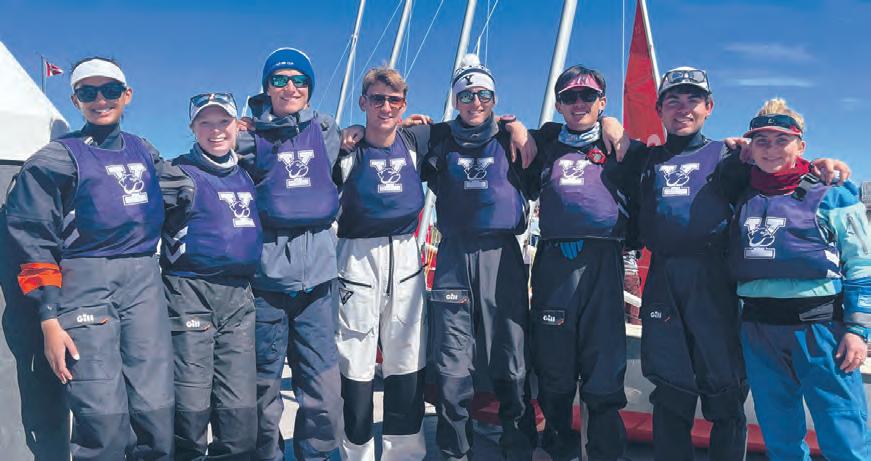
The heavyweight team began their season on Saturday with an unusual road trip to Sarasota, Florida, to race in the Sunshine State Invitational against Brown University and the University of Washington.
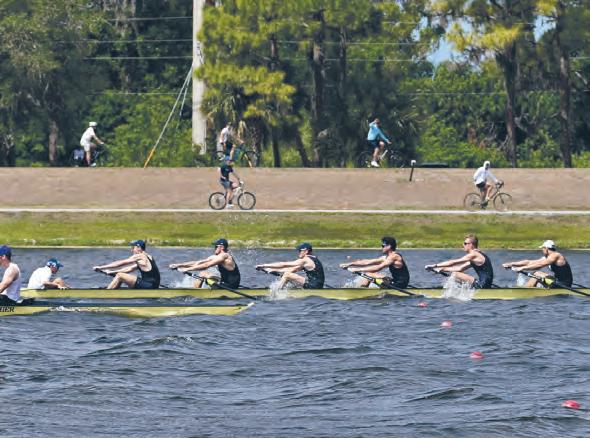
“It was great to start off the season with a good result,” said Harry Geffen ’25, who stroked the top Yale boat. “We’re excited to see how the rest of the season will unfold.”
While dealing with a strong tail wind that required a cleaner
technique, the Bulldogs came out on top in both the first and fourth varsity boats. The first boat won the Albert Cup by defeating Brown by almost more than six seconds with a time of 5:27.90.
This season will be especially important for head coach Steve Gladstone, as he announced late last year that the 2022-23 season would be his last before retiring.
Gladstone will leave his post as one of the most decorated collegiate rowing coaches of all time, having coached the most IRA Championship crews in history.
He has also been largely credited with restoring the Yale heavyweight team to the top of the collegiate level, winning three
YALE ATHLETICS
Bulldogs defeat St.John’s ahead of Ivy League start
FRIDAY, APRIL 7, 2023
YALE

Elis win fifth game in a row
YALE ATHLETICS
BY SPENCER KING AND PALOMA VIGIL STAFF REPORTERS
The No. 13 Yale women’s lacrosse team (9–2, 3–0 Ivy) continued its strong season with two more wins against Brown University (5–5, 2–1 Ivy) and No. 14 Army University (11–1, 5–0 Patriot), demonstrating their ability to win games in di erent ways.
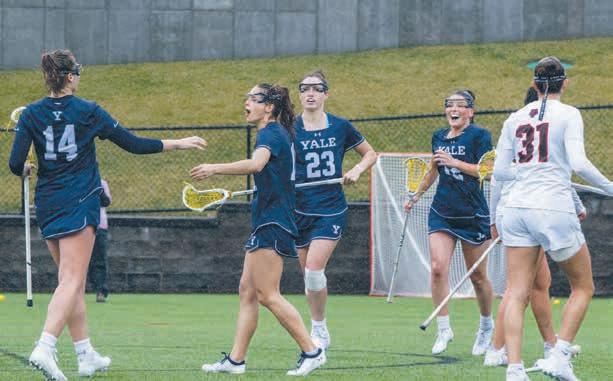
On April 1 against Brown, the Bulldogs followed a familiar script to victory, as attacker Jenna Collignon ’25 led the way in the 18–6 shellacking. The win was a big one for the Elis, as they felt they had something to prove in their third Ivy League game of the season.
“Dartmouth was tough,” midfielder Sophie Straka ’25
said. “It was a really challenging game mentally because it was so freezing and wet. But we still pulled out the win even though it was messy. I think it gave us the motivation to go into Brown with more fire because we wanted to make sure the rest of the Ivy League knew we weren’t going to be a close or an easy game.”
Much of that message was sent by Collignon, as she lit up the scoresheet with four goals and three assists against Brown. For her e orts, the sophomore earned her fourth Ivy League O ensive Player of the Week Award of the season.
The game also proved to be a historic one for attacker Liv Penoyer ’23, who set a Yale
record when she reached 87 career assists on a goal early in the second quarter.
After the Brown win, the Bulldogs went right back to work as they faced off against undefeated Army just three days later on Tuesday.
Despite the short rest, the Bulldogs played one of their best games of the season and were able to grind out a 14–13 win over an Army team that sat one spot below them in the national polls.
“We’re focusing a lot on the little details all over the field,” defender Marymegan Wright ’25 wrote to the News. “As we con-
Bulldogs prevail on the Charles River
BY PALOMA VIGIL STAFF REPORTER
The Bulldogs stayed focused on the windy Charles River this weekend, winning the Marchiando Team race despite shifty conditions.
Te Marchiando Cup marked the Bulldogs’ last weekend before the New England qualifiers in Providence, Rhode Island. The sailors in Boston faced windy conditions but still pulled out a first-place finish against notable teams such as Brown University and Tufts University. The win boosted the team’s morale going into the most challenging and important part of the season.
“I feel myself, along with the rest of the team, performed very
well this weekend,” said Jack Egan ’25. “For me personally, each weekend my crew and I are getting more and more in sync and performing better and better.”
Egan races with Nathan Sih ’25 and Catherine Cheung ’24, and both members of his crew helped him deal with the shifty wind conditions during the competition.
The difference in wind velocity throughout the day made it hard for the team to stay consistent in all their races. Egan commented on the increased competition due to this “significant aspect of randomness.”
“In these conditions, significant emphasis is placed on the crew to keep the boat going as fast as possible, and our crews are some of the best, so I attri-
bute this win to our crews,” Egan said.
Saturday marked a slow start because of the lack of wind, but in the mid-afternoon, there was a full round of round-robin sailing. The following day, significant oscillations in the wind made the balancing and overall maneuvering of the boats much more taxing. However, the Bulldogs stayed undefeated all day on Sunday, placing above second-place Brown, who had four overall losses.
The Bulldogs had only one loss, which was to Tufts, throughout the weekend of races.
“Jack and I were able to sail fast and smart, allowing us to only have one loss all weekend,
YALE ATHLETICS


versity (11–7, 3–2 West Coast).
This weekend, the Yale men’s tennis team (10–5, 0–0 Ivy) wrapped up non-conference play with a 4–0 win over St. John’s University (10–5, 0–0 Big East).
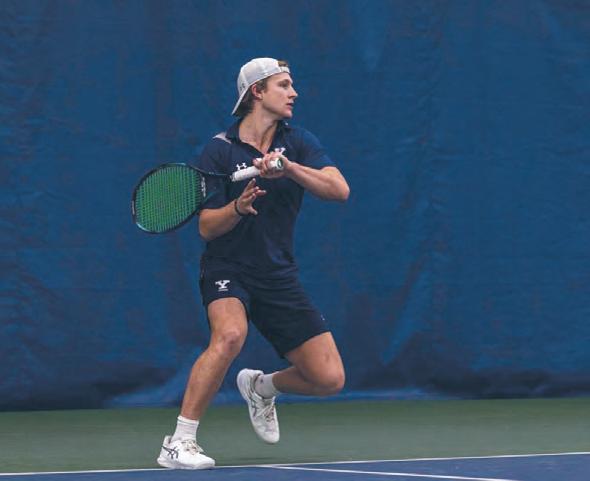
This game extended the Bulldogs’ win streak to three, following a successful run through central and northern California, where the team defeated California Polytechnic State University, San Luis Obispo (4–8, 0–1 Big Sky) and Santa Clara Uni-
On Friday, the Bulldogs blanked the Johnnies, earning the doubles point and taking three singles points before the remaining matches were pulled.
“I’m really proud that our team was able to reverse last year’s result,” Walker Oberg ’25 said.
Last year, the team fell to the Johnnies 2–5 in Cullman-Heyman.
The doubles duos of Theo Dean ’24 and Aidan Reilly ’25 and Eric Li ’26 and Michael Sun
12
COLTON SHAW ’25 STRUCK OUT 12 HITTERS IN EIGHT INNINGS AGAINST BROWN WHILE SURRENDERING
M.LACROSSE Princeton 16 Brown 12 W.LACROSSE Penn State 13 Cornell 10 BASEBALL UMass Lowel 6 Dartmouth 1 SOFTBALL Villanova 8 Penn 0 W.TENNIS Cornell 7 Binghamton 0 "
Appel ’24]
motivator
CHRIS WARD '24 TRACK AND FIELD
[Matt
has been a great
and I don't think either of us would be where we are today without one another.”
Captain Carolyn Skotz ’24 has led the way for the Bulldogs, totaling nine hits in her 17 at bats last week, as Yale has won six of their last eight games, including series victories over Columbia and Cornell. DAILY NEWS
·yaledailynews.com
ZERO RUNS EN ROUTE TO WINNING IVY LEAGUE PITCHER OF THE WEEK HONORS. S TAT
FOR MORE SPORTS CONTENT, VISIT OUR WEB SITE goydn.com/YDNsports Twitter: @YDNSports
OF THE W EEK
BY GRAYSON LAMBERT STAFF REPORTER
The Yale heavyweight crew team defeated Brown University and the University of Washington in its season opener, while the lightweight team defeated Navy.
SEE CREW PAGE 10
The Yale men’s tennis team beat St. John’s in their final non-conference match. Next, the Bulldogs will take on Harvard to kick o Ivy League play.
YALE ATHLETICS
The team sailing boats dominated the Marchiando Team race event on the Charles River over the weekend.
SEE M TENNIS PAGE 10
SEE SAILING PAGE 10
The Yale women’s lacrosse team defeated both Brown University and No. 14 Army to solidify its position as one of the best teams in the nation.
SEE W. LACROSSE PAGE 10
BY THREE INDIGENOUS STUDENT LEADERS



Voices of Resistance: Indigenous student leaders share their stories
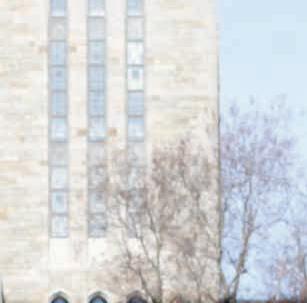
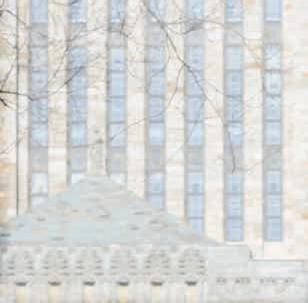
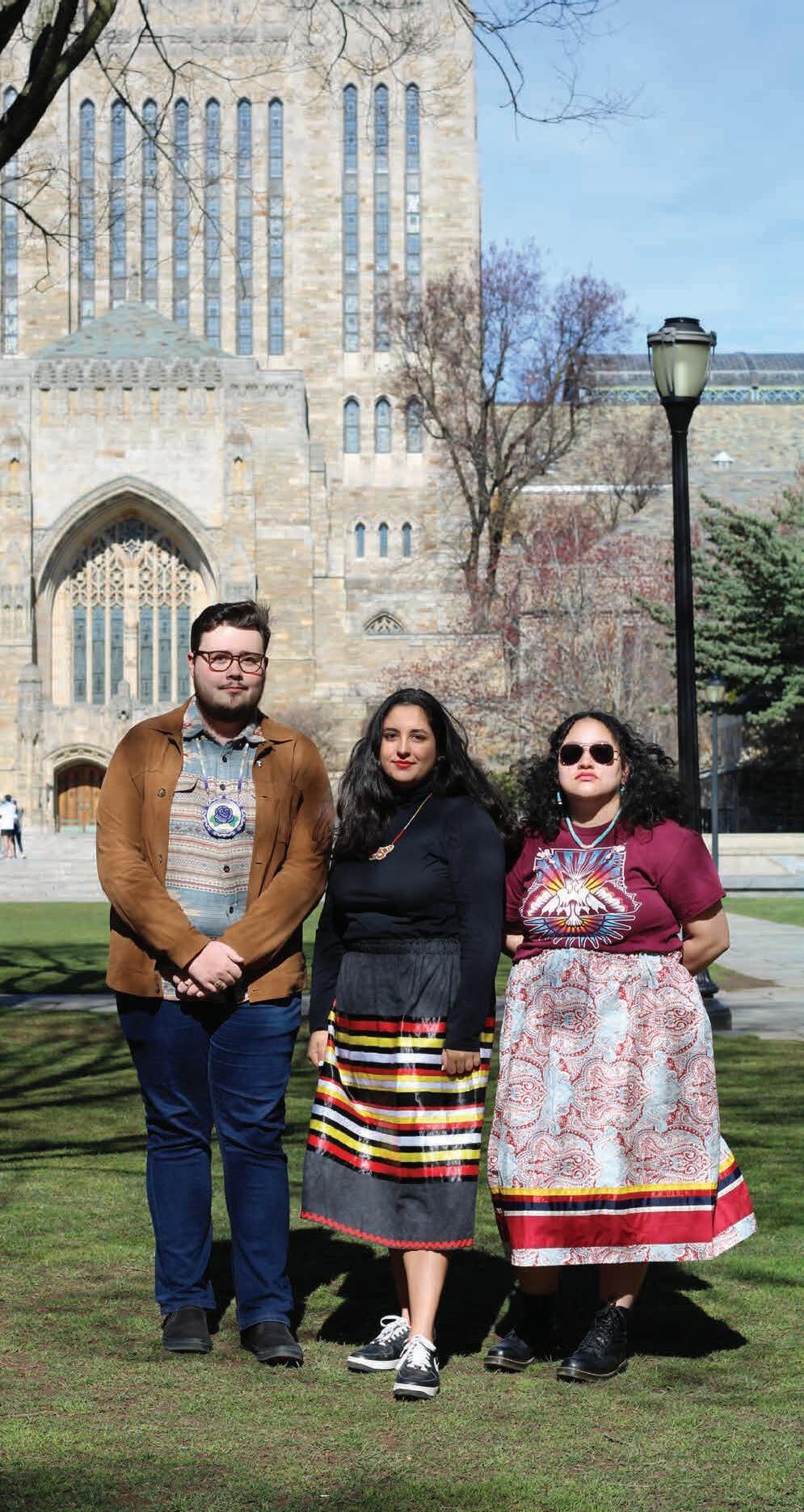
FRIDAY, APRIL 7, 2023 ELLIE PARK//STAFF PHOTOGRAPHER A SPECIAL OPINIONS ISSUE
Whose land are you on?
If you’re reading this on campus, you’re on the rightful lands of Algonquian-speaking peoples who have existed here since time immemorial and continue to exist. If you’re not on campus, you’re likely still living on di spossessed Indigenous land. Today’s Indigenous students at Yale work to carry on the legacy of their ancestors, fight for their communities and preserve their stories.
Yale’s Native community has faced numerous challenges and discrimination on the journey to accomplishing these goals. We are ready to tell you our story. Walk through the past year in the life of a Native student at Yale and learn about our needs for the future.
Feb. 14, 2022
The Native and Indigenous Student Association at Yale — the oldest and largest Native student organization on campus — begins its spring programming with an annual Missing and Murdered Indigenous Women’s Vigil on Feb. 14. We organize speeches, moments of silence, song and visual displays designed to bring campus awareness while simultaneously supporting our community members carrying emotional burden du e to this crisis. This vigil is a heavy event. Our community members shoulder this we ight knowing that this vigil has the potential to create positive change. In pursuit of this change, our community brought back the MMIW Vigil post-lockdowns with renewed resolve. The newly-elected board worked tirelessly to assemble the programming, arrange the event an d bring physical awareness to campus spaces. Following years of similar physical displays, the decision was made to bring red — th e common color for MMIW awareness — to Cross Campus. Red posters, red ribbons and red hand prints punctuated the gothic stone walls around the Women’s Table on Cross Campus in advance of the vigil. Th ese displays were designed to evoke response and reflection while minimizing labor placed on facilities staff; the posters are inherently non-damaging, ribbons were removed easily by student organizers and the redpainted handprints were created with water soluble, washable, Crayola-brand paint. Our community planned for and communicated our intention to manage the putting up an d taking down of these displays internally. Facilities was co ntacted in advance, and verbal support was received. The Ya le community woke on the morning of Feb. 14 to a Cross Campus transformed; the displays were widely received by th e student body and sparked conversations around MMIW. However, the success of these displays became quickly overshadowed by threats and anti-Indigenous rhetoric. The Indigenous community on Yale’s campus is used to facing pushback, and this vigil was no exception. Our co-presidents received emails, text messages and calls from a student life administrator, and they were told in no uncertain terms that the displays must be taken down immediately following the vigil’s conclusion. Heeding this warning, dozens of community members and non-Native al lies worked together to scrub the painted handprints from the walls. Had it not been for the below freezing temperatures, the clean-up would have been easy and no further issue would have arisen. Students were forced to leave the area to avoid frostbite with approximately 95 percent of the display removed, as at this point the washed wall was now frozen over with ice. Students returned the next morning to resume clean-up, but it was too late; facilities had begun cleaning with power washers. Though the walls were easily cleaned within an hour using these machines and no lasting damages occurred, student leaders received additional concerning communications. Some administrators demanded a list of names of involved students which inspired fear of pu nitive action. The co-presidents — along with the rest of
th e NISAY board — faced days of intense worry and anxiety, unsure what would happen to individuals or the organization as a whole as a consequence of this apparent condemnation of peaceful protest.
April 30, 2022
The fallout from the MMIW Vigil left severe and lasting trauma on our community. However, this would not be the last traumatic experience faced by Native students that semester.
On Saturday, April 30 of 2022, Red Territory — Yale’s intertribal drum group — traveled to Phillips Academy in Andover, Massachusetts for a performance. As part of this trip, we were offered a tour of Andover’s Institute of Archeology, which we discovered was a Peabody institution — related to Yale’s own Peabody. After arriving at the museum, we quickly realized we’d walked into a large collection of “acquired” Indigenous it ems and ceremonial objects. Items removed from countless communities, many of which our own students belonged to, were kept in open storage boxes in unsecured rooms, locked away from the rightful owners. Witnessing this scene was a trauma i n itself, a painful reminder of what colonial institutions like the Peabody have taken and retained from our Native communities.
Continuing through the museum, we were shown the ongoing archeological works in the building’s basement. Members of ou r group quickly realized the potentially traumatic threat that awaited us, but were reassured that the museum was not holding any human remains in its co llections. This lie would create enduring trauma, as members of our community began op ening artifact drawers, finding countless boxes full of human remains.
The consequences of spring semester were devastating on our community members. From the institutional violences following peaceful MMIW awareness to experiencing harm at the hands of a Peabody institution, traumas inflicted on individuals and th e broader Yale Native community have remained with us and im pacted many of our journeys. These traumas would contextualize the following months as our students ended the school year on a sour note at Spring Fling and returned in the fall to continued institutional ignorance.
May 2, 2022
After more than two years without Spring Fling, everyone was excited for the tradition to make a return and to find out the 2022 lineup. These sentiments would soon be ruined as i t was announced that Masego would perform. This was devastating and frustrating news fo r the Indigenous community. We would not be able to e njo y Spring Fling without being reminded of the racism and oppression that Indigenous people face every day and how it often goes ignored.
Masego’s most popular song
“Navajo” sexualizes Native American women, specifically Navajo/Diné women, and compares them to a “simian.” This i s very harmful to the Native American community because the incidence of MMIW (Missing and Murdered Indigenous Wo men) and sexual harassment of Native women remain prevalent and continue based on the se xualization of Native women and the commodification of their bodies.
NISAY tried to intervene and asked Yale if they could prevent Masego from performing this song. However, we were told that the Spring Fling committee had no control over what songs Masego could perform and could not disinvite him from performing. This was very frustrating to hear. The Spring Fling committee should take care in who they decide to invite and do research beforehand to ensure that none of the performers have offensive or racist songs. At a minimum, they should ensure that these songs will not be performed at Spring Fling. We found some members of the Yale Spring Fling Committee’s lack of action unsurprising and indicative of the ignorance of Native American issues and culture that this institute currently holds. There is no reason why Native and Indigenous students should have to experience racism during Spring Fling.
What was most frustrating during this event was the la ck of student support for the Native and Indigenous community at Yale. While protesting Masego’s performance, a couple members of our community took up space by playing drums and singing songs. Instead of welcoming the protesters in the audience, other students complained, shouted at or made vu lgar comments and gestures to the protesters. Masego’s performance not only revealed Yale as an institution’s ignorance of Indigenous issues, but also that of the Yale student body.
Aug. 28, 2022
After a stressful spring semester, the Yale Indigenous community was excited for a semester of celebration, to hang out in the Native American Cultural Center and to form a stronger community, along with celebrating Indigenous Peoples Day and Native American Heritage Month. However, we returned to find out that our only place of solace — the NACC — had a newly installed security system armed at 12 a.m. each night. Not only would the alarm be in place, but, if triggered by motion, Yale Public Safety or Yale Police Department would come to the NACC to investigate who triggered the alarm. Prior to the pandemic, the Native American Cultural Center was open 24/7. This meant th at students could go there for late night studying or hang out with each other to form stronger friendships and bonds. Implementing alarms not only prohibits this community-building but also instills a system of p o licing on the cultural centers that is not at all inclusive — in fact, the opposite. This means that students who are not aware of the alarms may forget and in th e worst case scenario cause Yale Public Safety or the Yale Police Department to come to the NACC. This would not only frighten the student but would also frighten the community with any actions that may be taken by YPS or YPD in their investigation of who is in the NACC. Since the alarms have been put in place, everyone has been on their toes when it comes to staying in the NACC. Everyone on staff ensures that all students leave early so that no one has a potentially harmful experience with YPS or YPD. This creates conflict, because the NACC staff have to remove their peers from a safe space, putting an unfair burden on them and creating an uncomfortable power dynamic. We have also not been able to spend as much time with our friends or in community in the NACC due to the alarms.
Sept. 28, 2022
The Pterodactyl in O.C. Marsh was stolen from Indigenous lands. O.C. Marsh stole many articles from Indigenous people and lands. Stealing dinosaur bones or fossils from Indigenous people and lands may on the surface appear to be insignificant to those who were stolen
fr om, but this is a deeper issue. Besides the obvious fact that stealing from Indigenous people is wrong, it steals potential avenues of wealth for tribes, and the process of removal of these fossils could destroy Indigenous lands. Fossils stolen from Indigenous people and lands ought to be repatriated.
To protest this, some Native students put red sticky notes on the Pterodactyl’s case that said “STOLEN.” There was no tampering with the sticky notes or us ing tape to stick them down. The sticky notes could be easily removed by picking them off as one normally would. There was also no vulgar language on the sticky notes. This was a simple, nonviolent protest.
Two days after this action, members of the Native community received a call from the Ya le Police Department about the red sticky notes. In the call from YPD, the police said that a faculty member had called them unsettled about the sticky notes and viewed it as a form of vandalism. However, no permanent destruction was done and no tampering of the sticky notes occurred to make them difficult to remove. It was incredibly frightening as t e enagers, students and Indigenous people to have our right to peaceful protest policed. Even more frightening was the method of identifying the students who had protested — their Yale Native shirts and facial ID.
Yale University does not commemorate Indigenous Peoples’ Day. Despite this, photos of our community celebrating headlined Yale’s official Instagram that day — from tokenizing portraits of students in tr aditional regalia to non-consensual recordings of cultural pe rformances. Yale’s more than 665,000 followers heard our stories through the mouth of Yale, despite the university failing to honor IPD as a holiday. We call on Yale to solely recognize Indigenous Peoples’ Day and to denounce the continuance of Columbus Day in the United States as an inherently harmful and racially violent holiday. W h ile we appreciate the social media awareness, it is difficult to feel it as genuine support while Yale remains neutral in the fight for contemporary Indigenous justice and survival.

“To our community, it felt like we were being erased from our own story. We call on Yale to properly credit Indigenous students for their hard work.”
Secondly, an informative graphic on IPD events created by the Native and Indigenous Students Association at Ya le (NISAY) was posted on the official Yale Instagram. Not only was NISAY not credited for the graphic in the post, but the NISAY logo was removed from the graphic. To our community, it f el t like we were being erased from our own story. We call on Yale to properly credit Indigenous students for their hard work.
Ongoing Academic Challenges
As a community, we became worried about what we could do to peacefully protest. Were we always going to be policed or discriminated against in all of our peaceful protests on campus? There were no untruthful statements on the sticky no tes and they could be easily removed. There was no violence or destruction of the cases to be categorized as vandalism.
The MMIW Vigil, the Masego protest and this protest all garnered responses that worried a nd traumatized Indigenous students. When are Native and Indigenous students going to be able to peacefully protest without being worried about our status as students on campus?
Oct. 10, 2022
Oct. 10, 2022 marked an important annual celebration for the Native community at Yale, and for Indigenous communities around the globe. Every Indigenous Peoples’ Day (formerly kn own as Columbus Day in the United States) students gather to share music, dance and joy. For us, IPD commemorates the survival of our ancestors and our existence here today, continuing to fight for their stories and contemporary issues in our communities. It is at once a time of honoring, reflection and protest. Our community looks forward to it every year, and in the midst of a difficult 2022, we were especially excited for this year’s IPD.
To date, Yale has no Indigenous Studies major, despite having courses in Indigenous history that date back to the 1980s and over a dozen courses that are being taught currently. Other peer institutions, such as Dartmouth and Cornell, allow students to major or minor in the field. Prior to the fall of 2022, Yale College had only one tenured or tenure-track Indigenous professor. With the addition of two ne w wonderful professors last fall, students were excited to have new reasoning for an Indigenous Studies major. Even Indigenous students majoring in STEM tend to take enough classes about Indigenous people topics to fulfill a Native Studies major or certificate. However, we learned very quickly that institutional changes are never simple. No matter how much demand there is, Yale requires professors, not students, to back the creation of a new major. With only three tenured or tenure-track professors within the College, we face the possibility of not having enough professors to advocate for creating a major. No matter how hard Native students work, they are thus unable to make tangible academic changes for themselves. We call on Yale to support their Native students in creating an Indigenous Studies major as soon as possible. Learning tribal and global Indigenous histories is an essential skill for all students,
PAGE B2 YALE DAILY NEWS · FRIDAY, APRIL 7, 2023 · yaledailynews.com
COURTESY OF JORDAN SAHLY
NISAY begins its spring programming with an annual Missing and Murdered Indigenous Women’s Vigil on Feb. 14.
“From the institutional violences following peaceful MMIW awareness to experiencing harm at the hands of a Peabody institution, traumas inflicted on individuals and the broader Yale Native community have remained with us and impacted many of our journeys.”
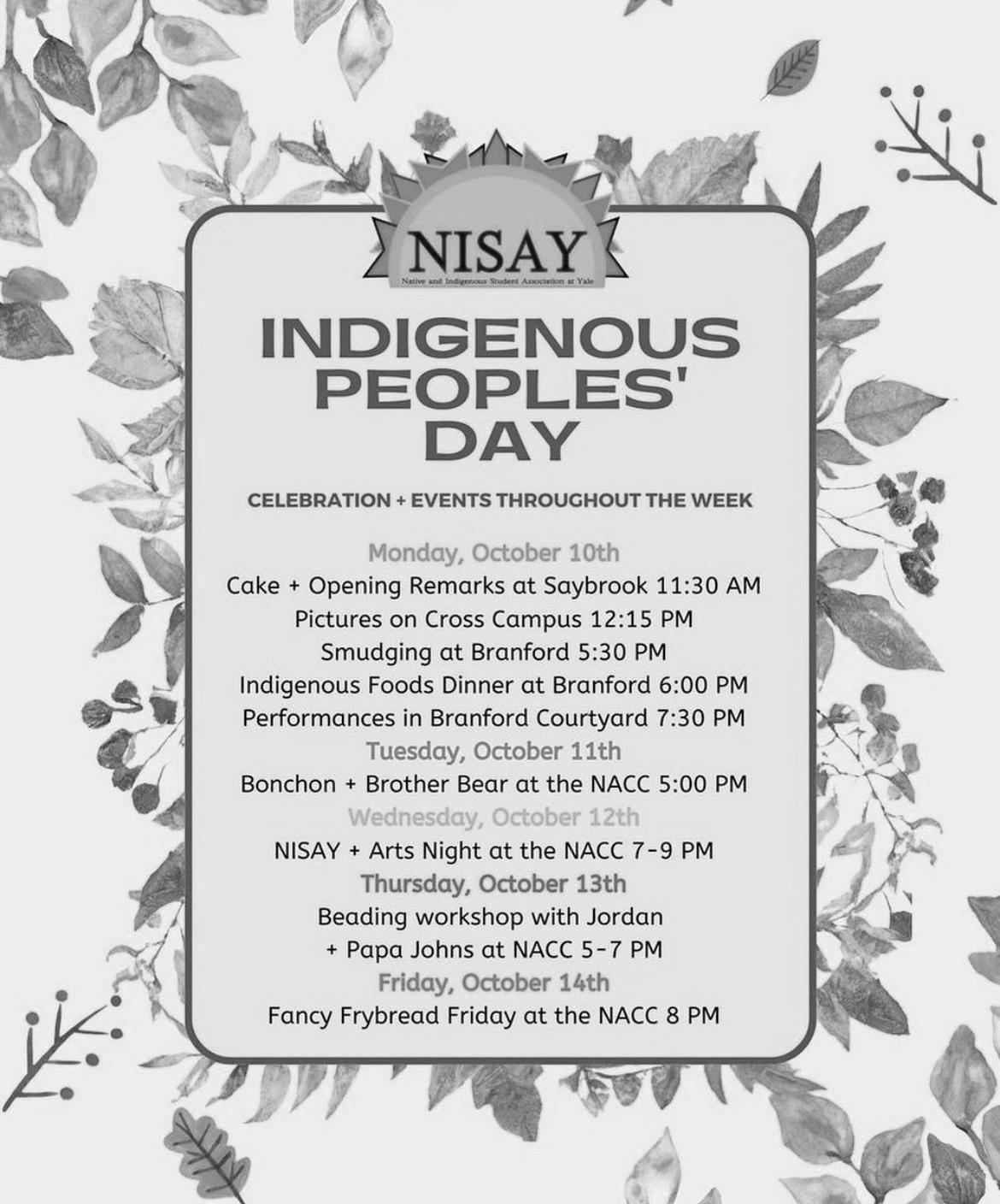
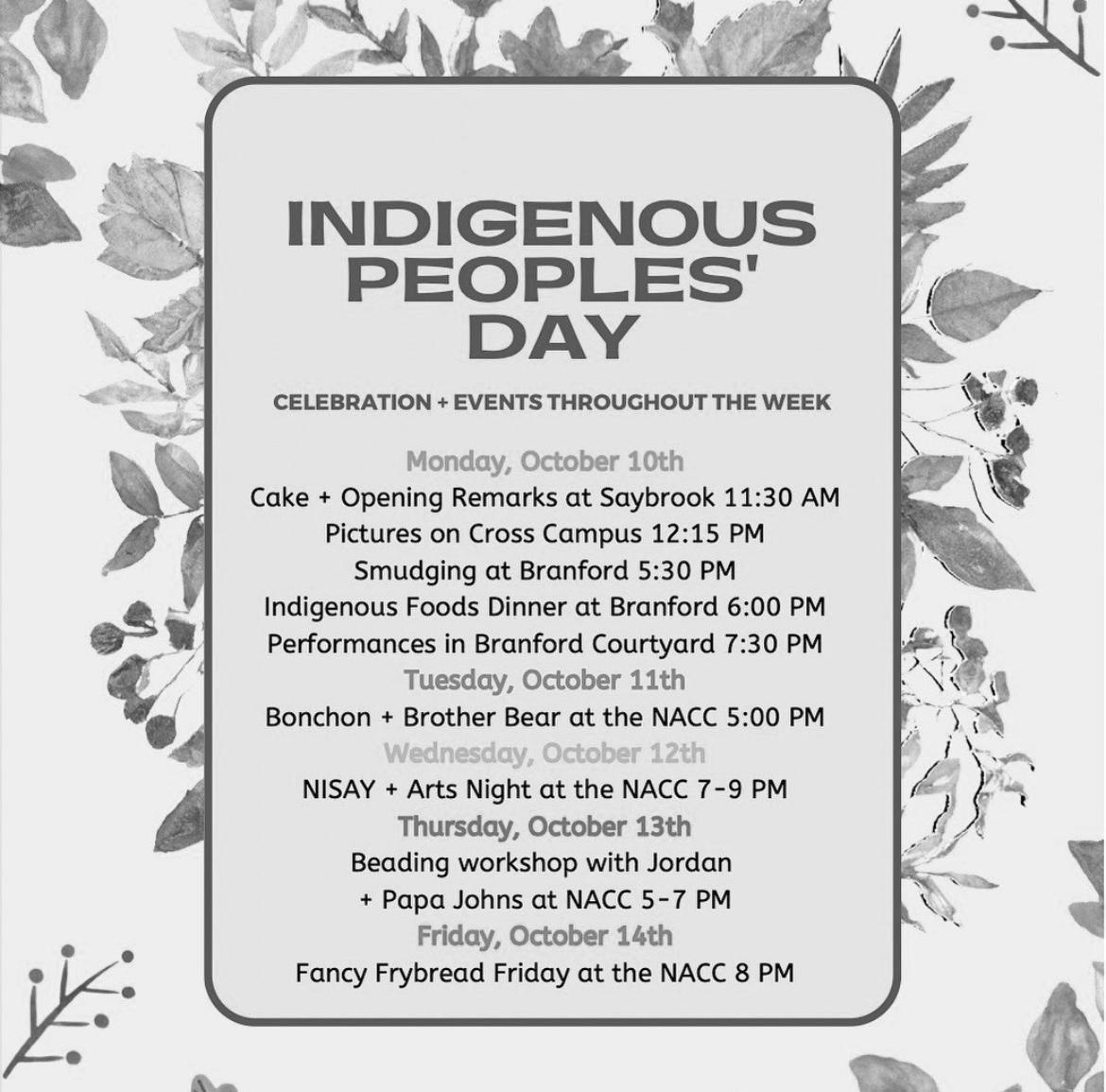
PAGE B2 YALE DAILY NEWS · FRIDAY, APRIL 7, 2023 · yaledailynews.com
COURTESY OF NISAY
FROM YALE INSTAGRAM PAGE A modified version of NISAY’s graphic, with the NISAY logo edited out, was posted to the Yale Instagram. NISAY was not credited for the graphic.
NISAY created an informative graphic summarizing events around Indigenous Peoples’ Day, which fell on Oct. 10, 2022.
and this major would allow our community to thrive more structurally within Yale’s larger ethnic studies majors.
Every semester, students have the option to take Indigenous languages through the Native American Cultural Center’s language program. With accomplished and respected professors and a variety of languages off ered, many students turn to this program to connect with their culture and practice their Native language. Yale, however, does not offer credit for these classes, despite them being organized and reputable. Unfortunately, taking on another fullti me class without receiving credit for it is simply not feasible for many Indigenous students.
For many, the opportunity to learn their language from an elder has never been presented to them, and turning it down is very difficult no matter the additional strain put on them. For those who do take on the challenge, we’ve found ourselves struggling to keep up with other classes or with our Native language class to compensate for the constraints on our time and energy forced by this lack of accreditation. The reality is that students become forced to choose between their academic wellness and connecting with their cultures. We call on Yale to accredit the Native American Cultural Center’s language programs and provide support for them to expand. Alternatively, we call on Yale to expand resources for students to take Indigenous language classes outside of the University (for example, at their local tribal college) and count it towards the language requirement. Expansion of this would greatly increase Indigenous students’ academic health and capacity for cultural connection during their time at Yale. Demands and changes we want to see
In order to make Yale a more welcoming and inclusive space for Indigenous students and Indigenous people in general Yale needs to change how they discuss and interact with Indigenous people. With this change Yale needs to collaborate with Indigenous leaders on campus (including but not limited to students, f aculty, professors and local tribes) to make campus a better space for Indigenous people.
Yale needs to change their land acknowledgment. Currently the land acknowledgement uses past tense to refer to Indigenous people that were displaced. For example it says that the tribes “stewarded the lands and waterways” as if they do not currently exist or reside on their traditional homelands. The creation of Connecticut, New Haven and Yale led to the Quinnipiac not being a unified tribe that exists today. So, it is especially important to recognize the work the Quinnipiac’s descendants and the work of
the descendents of the Mohegan, Mashantucket Pequot, Eastern Pequot, Schaghticoke, Golden Hill Paugussett, Niantic and other Algonquian speaking peoples do to maintain their sovereignty and connect with the land that Yale occupies.
Yale needs to recognize Indigenous Peoples Day and Native American Heritage Month. Yale currently recognizes Indigenous Peoples Day along with Columbus Day and Italian Heritage Day. This is paradoxical because Columbus caused the genocide of N ative American people and actively committed violence and exploitation of Native Americans. One cannot simultaneously celebrate Indigenous genocide and Indigenous pride.
Yale needs to have an Indigenous Studies major . Many other colleges in the Ivy League offer a Native Studies major, such as Harvard and Dartmouth. Outside of the Ivy League many other colleges offer a Native Studies major, such as Stanford. Yale is behind on hiring Indigenous staff and creating a Native Studies major.
Yale needs to offer Indigenous languages for credit. Currently there is a program through the NACC that gives students the opportunity to learn their Indigenous language but the course is not for credit. This means that on top of their regular course schedule, Native students have to work harder to learn knowledge that was stolen from them bec ause of colonization. The Linguistics department has taken steps to hire a professor that would teach an Indigenous language, but given that there are hundreds of Indigenous languages, this is not sufficient.
Yale needs to ensure that faculty are properly trained in cultural awareness, so that faculty are less likely to discriminate against, stereotype or oppress their students. Indigenous students have experienced racism and culturally insensitive remarks while in clas s es and by the broader Yale faculty. There is no reason why this should continue to occur at Yale. Increased formal anti-racism training should be the norm in academic spaces, and Yale is no exception. Students should not have to experience discrimination or racism in the classroom.
Yale needs to complete more thorough research and recognition of their hand in Indigenous genocide. There needs t o be a formal investigation into how Yale and those affiliated with Yale contributed historically to the displacement and oppression of Indigenous people, including those who have lost fossils, cultural items and land to the University.
Ongoing Native Success and Joy
Despite the numerous traumas, violences and continued institu -
tional shortfalls faced by Native students, our community also experienced a year of immense success, joy and growth. As marginalized communities have always done, we found strength in each other and our roots through difficult times. 2022 was defined by one of the largest ever number of first-years becoming leaders within our organizations and the NACC. Driven by this community growth, our organizations had great success in promoting Native voices on campus; from the MMIW Vigil to Indigenous People’s Day, NISAY brought us together and made the Yale community see, hear, and stand with Yale Natives.
In addition to these contin
ued successes by our oldest organization, the Native commu
nity also saw the creation of new groups and events that are work
ing to expand Native joy. The Yale Chapter of the American Indian Science and Engineering Soci
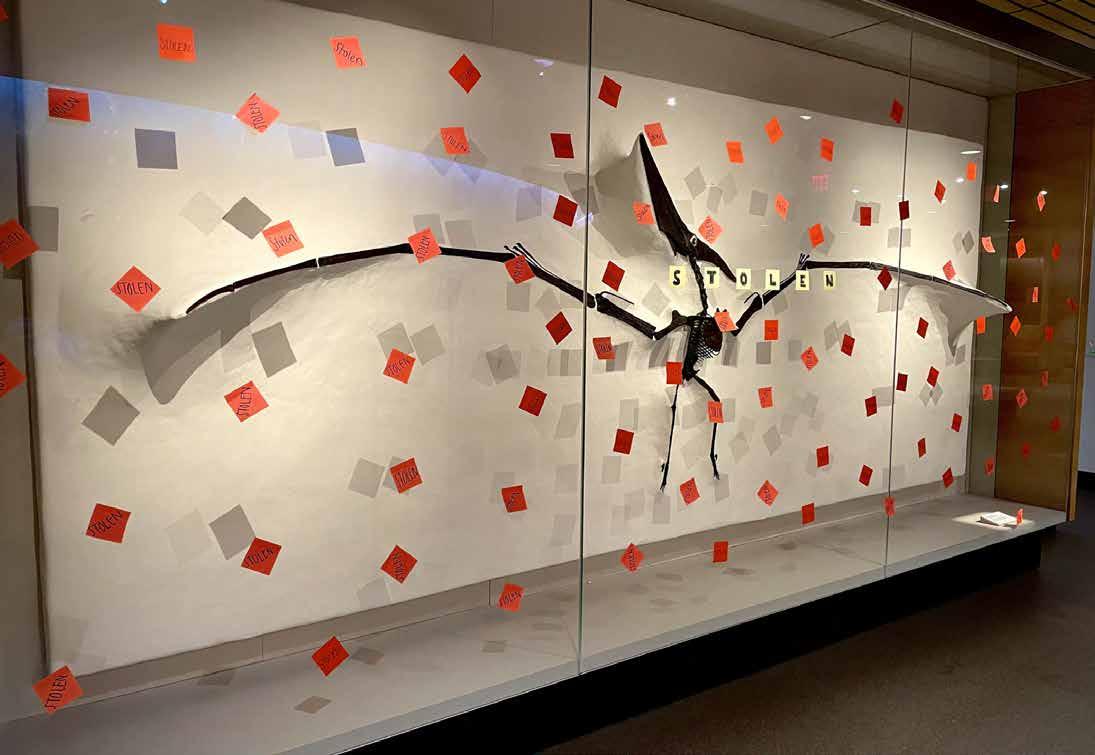
ety was reignited, and since then has ensured that Native students in STEM are represented, supported and successful on Yale’s c ampus. Additionally, with the rise of Indigenous Pacific Islander admits to Yale, the Pacific Islander Student Association at Yale was formed. Student leaders with support of the NACC created a first-of-its-kind professional development trip to Washington, D.C., where current Yale Natives could connect with Native alumni, practice professional development skills and gain insight into the opportunities available to Native students post graduation.
Finally, our students found personal success through community and leadership. Branford elected Nyché Andrew (Yupik and Inupiaq) as a YCC Senator, where she serves both the Branford and Native communities honorably. In the broader c ommunity, Yale g ained two new Indigenous professors w ho w ork to create curriculum guided by Indigenous kno w ledge. These successes by our students, faculty and organizations have created an atmosphere of Native joy on Yale’s Campus, and Native students intend to continue thriving at Yale for years to come.
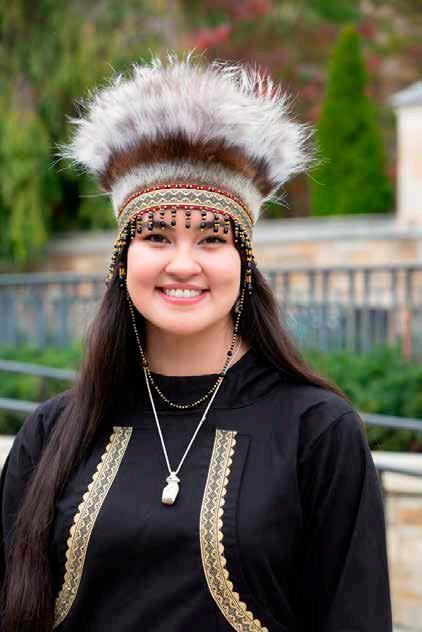
The Future of Indigenous Joy at Yale
Despite these challenges, Indigenous students have been finding ways to thrive on campus for more than a hundred years. In times of harm and struggle, we rely on each other and the strength of our ancestors to carry us toward a brighter future. Walking around campus, whether in jeans, beadwork or a ribbon
skirt, we are connected many layers deep by something much larger than ourselves. This year, we are looking forward to a couple of very large celebrations, and invite you to celebrate with us. Please come to the Yale 2023 Powwow on April 22 to share space with us and elevate the beauty of Native American joy. There will be food, lots of beadwork and dancing.
This fall is the Native American Cultural C enter’s 10th anniversary, commemorating a decade of having our o wn physical space on campus at 26 High Street. We will al s o be hosting the Henry Roe Cloud conference in memory of Henry Roe Cloud, the first Indigenous student at Yale. We honor those who have come before us, our peers now, and those who will come after us.
We bring you these stories as leaders, organizers and carriers of a legacy of resistance. Ou r experiences this past year have strengthened us and our communities — our resolve as Indigenous people to make a difference is unwavering. The Yale Native community will be busy in 2023 making our voice
Contact
-
-
-
-
COURTESY OF JORDAN SAHLY
O.C. Marsh
Sept. 28,
Two
heard on campus; we call on the broader community to amplify our voices and to support your Indigenous peers.
Some
Native students placed sticky notes with the word “STOLEN” on the Pterodactyl’s case in
on
2022.
days later, members of the Native community received phone calls from YPD.
COURTESY OF NISAY
Andrew (Yupik and Inupiaq) was elected to represent Branford College in the YCC.
MADELINE GUPTA, Sault Ste. Marie Tribe of Chippewa
at madeline. gupta@yale.edu.
“In times of harm and struggle, we rely on each other and the strength of our ancestors to carry us toward a brighter future. Walking around campus, wehther in jeans, beadwork, or a ribbon skirt, we are connected many layers deep by something much larger than ourselves.”
Contact
Indians,
MARA GUTIERREZ,
Nation, at mara. gutierrez@yale.edu.
Navajo
SAHLY, Eastern Shoshone Tribe, at jordan.
Contact JORDAN
sahly@yale.edu.



 BY MIRANDA WOLLEN STAFF REPORTER
BY MIRANDA WOLLEN STAFF REPORTER














































